Aperture's Blog, page 102
April 25, 2018
Truth and Reconciliation
What does it mean to confront the history of racial violence in the United States? In a wide-ranging conversation, Bryan Stevenson and Sarah Lewis discuss images, power, and justice.
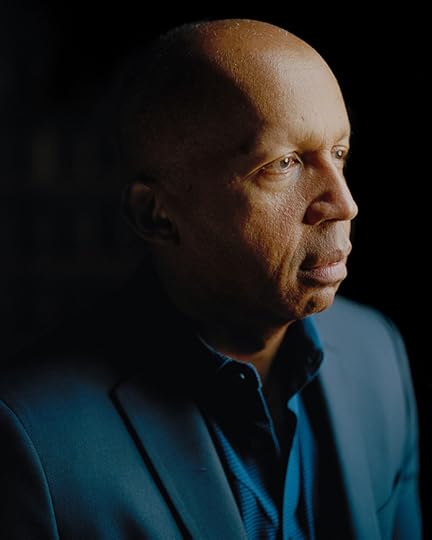
Bryan Stevenson at the office of the Equal Justice Initiative, Montgomery, Alabama, October 2017
Photograph by John Edmonds for Aperture
A visionary legal thinker, Bryan Stevenson has protected the rights of the vulnerable through his work as a death-row lawyer. With the Equal Justice Initiative (EJI), an organization he founded in 1994, Stevenson has made strides to end mass incarceration and challenge racial and economic injustice. He has argued cases before the Supreme Court, recently winning a watershed ruling that mandatory life-without-parole sentences for children seventeen and under are unconstitutional. Stevenson’s 2014 memoir, Just Mercy, recounts his experiences navigating an unfair criminal justice system.
But his work extends beyond the legal realm—Stevenson is invested in shifting cultural narratives and making history visible. This is work to which Harvard professor and art historian Sarah Lewis, guest editor of Aperture’s 2016 “Vision & Justice” issue, is uniquely attuned. Lewis has written at length on the urgent role of art in social justice, on the corrective function of images and how they enable us to reimagine ourselves. Last October, Lewis visited Stevenson at his office in Montgomery, Alabama, for an extended conversation. Central to their discussion were Stevenson’s next projects: on April 26, 2018, he will open the National Memorial for Peace and Justice in Montgomery, which will honor the lives of thousands of African Americans lynched in acts of racial terrorism in the United States, and the Legacy Museum: From Enslavement to Mass Incarceration, which will trace a historical line between slavery, lynching, segregation, and mass incarceration. Of his work, Stevenson remarks, acts of truth telling have a visual component. “If we just go to the public square and people say some words, it doesn’t have the same power.”
Sarah Lewis: It’s a rare privilege to be able to talk with someone doing work in the realm of justice who understands the role of culture for shifting our narratives regarding racial inequality. I want to have a conversation about how culture, specifically photography, has shifted national narratives on rights and race-based justice in the United States.
Bryan Stevenson: Yes.
Lewis: To begin, I would say that we must consider the journey from 1790 with the Naturalization Act, when citizenship was defined as being white, male, and able to hold property, to the present-day definition of citizenship. The question becomes: Is this journey a legal narrative or is it also a cultural one?
Stevenson: Absolutely.
Lewis: You’ve spent a lot of time dealing with this history as it relates to emancipation and slavery, up until the current day. How did you arrive at a place of seeing the importance of culture for getting people to understand this work?
Stevenson: When I first started going to death row in the 1980s, I was constantly seeing things that communicated really important truths about the experience of the men and women I was meeting in these desperate places. You would see people interact with each other, constantly sharing gestures of compassion and love and support. You’d witness people acting in ways that were so human. And yet they were being condemned, in large part, because there was a judgment about their absence of humanity.
To counter the unforgiving judgment, I wanted other people to see what I saw. And, if anything, it was through the experience of being in jails and prisons, year after year—seeing this rich humanity and the redemption and transformation of individuals, despite the harshness of the environments—that I became persuaded that if other people could see what I see, they would think differently about the issues presented in my work. So, in the 1990s, when we first started representing our work in a modest way, images became an important part. In our first report we used a picture of the Scottsboro Boys. And we also used a picture of a client with compelling features who had been on death row for twenty years. For me, it has always been clear that there is a way in which photography can illuminate what we believe and what we know and what we understand.
It led me to increasingly use imagery to try to help tell the story of our clients. After twenty years of doing that work—and we had a lot of success, but we also saw the limits—I became aware that the rights framework, the insistence on the rule of law was still going to be constrained by the metanarratives that push judges to stop at a certain point: the environment outside the court. That’s what pushed me to think more critically about narrative, not just within a brief, within a case, within an action, but more broadly. And when it comes to narrative struggle, there is nothing that has been more confounding than racial inequality.
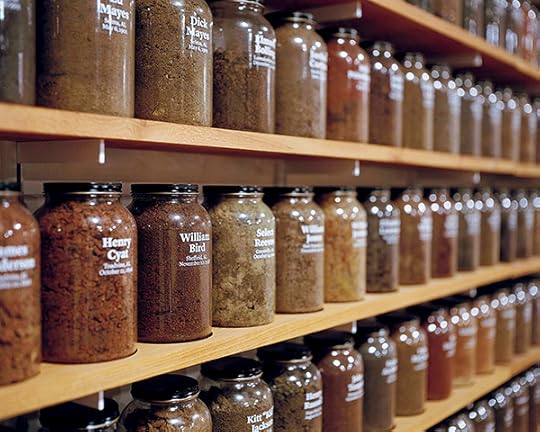
Soil from Alabama lynching sites, collected as part of EJI’s Community Remembrance Project, Equal Justice Initiative, Montgomery, Alabama, October 2017
Photograph by John Edmonds for Aperture
Lewis: There’s much work happening in the arts around the nexus of art, justice, and culture. But you’re doing the work of having this become more understood in the wider realm. It’s so crucial. Something that I asked myself as I began this work was: What is the connection between culture and justice? This piece about “narrative” is what unlocks that.
Stevenson: That’s absolutely true for me. Because in many ways, our inattention to narrative is what has sustained the problems we’ve tried to overcome.
Lewis: Yes. Inattention and also unconscious conditioning by it.
Stevenson: Absolutely. So if we think differently about what happened when white settlers came to this country with regard to native populations, if we actually identify what happened to millions of native people as a genocide, the word genocide introduces something into the narrative that is quite disruptive. We’ve been hesitant to use the word genocide, because the narrative would shift in really powerful ways if we understood the violence and exploitation of native people through that lens.
I think the same is true when you look at the African American experience in this country. I’ve gotten to the point where I believe that the North won the Civil War, but the South won the narrative war. They were able to hold on to the ideology of white supremacy and the narrative of racial difference that sustained slavery and shaped social, economic, and political conditions in America. And because the South won the narrative war, it didn’t take very long for them to reassert the same racial hierarchy that stained the soul of this nation during slavery and replicate the violence and racial oppression that existed before the great insurrection.
It’s the narrative of racial difference that condemns African Americans to one hundred years of segregation, exclusion, and terror, following emancipation. Had we paid more attention to the narrative, we would not have seen the U.S. Supreme Court strike down all of those acts by Congress in the 1870s that were designed to protect emancipated black people and create racial equality. But the Supreme Court embraced the narrative that basically maintained that black lives are not worth risking further alienation of the South. It wasn’t about law for the court. The law said that we were all equal, but the narrative allowed the court to accommodate inequality and racial terror.
Narrative struggle is where we have to pay attention if we want to avoid replicating these dynamics as we continue to face the same problem of racial divide.

Memorial plaque to the Montgomery slave trade, placed by the Equal Justice Initiative, October 2017
Photograph by John Edmonds for Aperture
Lewis: On this point about looking at the ways in which whiteness became conflated with nation through narrative, there are a number of things to mention. But just to get back to the Native American piece and the criminalization of rights-based action, it was, in large part, photography that legitimated acts of genocide. Edward Curtis’s photographs, for example, naturalized and supported the genocide.
Stevenson: That’s right. Because if you can create the idea that these native people are savages and you can create a visual record that supports that idea, then people don’t view the abuse and victimization as they ought to.
What’s interesting to me about some of that early art and visual work is that it’s really about perpetuating the politics of fear and anger. And fear and anger are the essential ingredients of oppression. Art is complicit in creating these narratives that then allow our policymakers to perpetrate acts of injustice, decade after decade, generation after generation.
Lewis: Absolutely. But before we get more to the current day, I think there is a framework here that we should acknowledge, and a thinker who did the courageous work at the time, during the Civil War, to put out this idea about narrative—and that is Frederick Douglass. He gave a speech during the Civil War that he called “Pictures and Progress.” He confused his audience at the time by speaking about what seemed like a trifle during this nation-severing conflict. Something seemingly as small as a picture, he argued, could have as much force as a political action, as a law. It’s a fascinating speech. He was interested in what he called “thought pictures.” This was his gesture toward narrative; he used this term to describe the ways in which culture, what we consume daily through pictures, can shift our notion of the world. That is what he thought would effect the change. Douglass was the most photographed American man in the nineteenth century, for good reason. He believed in this idea.
Stevenson: It’s a really powerful insight, that he could appreciate how getting people to see his humanness was critical for them to understand the inhumanity and degradation of slavery. In many ways, Dr. King had that same insight.
Lewis: Yes.
Stevenson: He understood that the spectacle of nonviolent resistance to white, armed, military repression could create a consciousness about the African American struggle in the South that could not be created any other way.
As we’ve been working on our Legacy Museum, which explores slavery and the human suffering created by the domestic slave trade, it’s been frustrating, because there is so little photography or imagery that exposes the inhumanity of enslavement. It’s almost as if there was a real effort to avoid visual documentation that might have implicated us and revealed our complicity in facilitating such great suffering.
I have found in the published narratives of enslaved people this unbelievably rich source of content, not visual in the sense of photography or art, but visual in terms of language. They tell stories. They use the narrative form to create a very intimate picture of what it was like on the day when their children were taken away on the auction block, or when they lost their loved ones. In our museum, we’re using technology and video to give animation to these words through performance. I’m really excited about it because it creates a kind of intimacy, it paints the kind of picture that Douglass tried to achieve.

Charles Moore, Martin Luther King, Jr. is arrested for loitering outside a courtroom where his friend Ralph Albernathy is appearing for trial, Montgomery, Alabama, 1958
Courtesy Charles Moore Estate and Steven Kasher Gallery
Lewis: We’re sitting here in a building in Montgomery that functions as a kind of narrative correction. Is that right?
Stevenson: Yes. We’re a few blocks from Dr. King’s church and from where Rosa Parks started the modern civil rights movement. However, what we didn’t appreciate until we began our racial justice project is that we were also in the epicenter of the domestic slave trade. That part of the historical narrative of this community had largely been ignored. But it became clearer to us that this street, Commerce Street, was one of the most active slave-trading spaces in America. Tens of thousands of enslaved people were brought here.
Lewis: Hence the name.
Stevenson: Yes, that’s right, hence the name. Thousands of black people were trafficked here by rail and by boat. Montgomery had the only continuous rail line to the Upper South in the 1850s.
So this knowledge made me reimagine how this space could contribute to a more honest American identity. And the marker project was the first thing we did locally, to try to create awareness of this past. If you come to Montgomery, there are fifty-nine markers and monuments to the Confederacy in this city. They are everywhere. “The First White House of the Confederacy” is the sign you pass when you drive into town. Our two largest high schools are Robert E. Lee High and Jefferson Davis High. But not a word about slavery. So putting up these markers that introduced facts about the Montgomery slave trade and the domestic slave trade and the slave warehouses and the slave depots that shaped this city, which were avoided by local historians, was really important.
Lewis: You talked about the need to shift our cultural infrastructure in the United States because of the deliberate silence about racial terror, and, of course, this connects to mass incarceration. But can you talk about the shifts that you’re hoping will occur in the National Memorial for Peace and Justice and the museum in Montgomery?
Stevenson: I do think we have to make our history of racial inequality visible. We have been so inundated with these narratives of American greatness and how wonderful things have been in this country that it’s going to take cultural work that disrupts the narrative in a visual way to force a more honest accounting of our past. People take great pride in the Confederacy because they actually don’t associate it with the abuse and victimization of millions of enslaved black people. So that has to be disrupted.
What appeals to me about the markers is that they are public; everyone encounters them. We can create a museum. We can create indoor spaces that try to express and deal with these issues. But a lot of the people who need this education are never going to step inside those places. Public markers, however, can’t be ignored, and we have continued that effort with our work on lynching. Our goal is to mark as many of the lynching sites in America as possible. We use the words racial terrorism on each one of the markers. We name the victims. We give a narrative that contextualizes the brutality and torture black people endured. I do think that’s important, to challenge the public landscape, which has been complicit in sustaining these narratives of white supremacy and racial inequality. That’s another way in which acts of truth telling have a visual component. If we just go to the public square and people say some words, it doesn’t have the same power as permanent symbols of collective memory.
We are opening the National Memorial for Peace and Justice in Montgomery, which will acknowledge over four thousand victims of lynchings and identify over eight hundred counties in America where racial terrorism took place. Hundreds of six-foot monuments will be on the site, including sculptures created by artists who contextualize lynching within an understanding of slavery, segregation, and contemporary police violence. Deeper exploration of these issues is then possible in the museum, and all of this, for me, is really exciting. Particularly in these political times where you’ve seen the retreat and obfuscation of historical truth. It was a shock to me in 2008 how quick people were to assert that we now live in a postracial society; that was obviously incredibly naive.
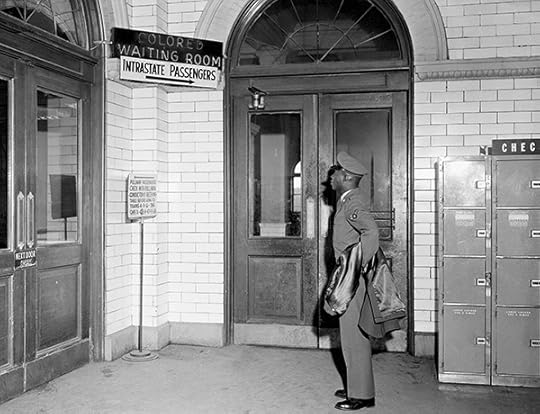
Photographer unknown, An airman pauses to examine the “Colored Waiting Room” sign at
Atlanta’s Terminal Station, January 1956
© Bettmann/Getty Images
Lewis: It occurs to me, and I wonder if this is correct, that you focused on your own experience of needing narrative to communicate what you were seeing with your clients—how racial terror and lynching have structured the criminal justice system and the landscape of racial inequality.
Stevenson: Yes, absolutely. It’s not a surprise that after emancipation, people went from being called “slaves” to being called “criminals.” Convict leasing and lynching were about criminalizing black people. Rosa Parks makes her stand, and she’s immediately criminalized. Those women who fought for equality on buses here in Montgomery, what they were being threatened with was a formal designation as criminals: Claudette Colvin, Mary Louise Smith, all of these women.
The notion that resistance to racial inequality makes you a dangerous criminal has always been there. So, then, it’s not a surprise that after the success of the Voting Rights Act and the Civil Rights Act, prosecutors begin focusing on “voter fraud” in the black community, followed by this new War on Drugs, which then leads to the United States having the largest incarcerated population in the world. The rate of incarceration is just unprecedented.
I think that the criminalization of black people, and now brown people who are deemed illegal because of their state of national origin, is very much a part of the American story, and it’s been present with us in ways that we just haven’t acknowledged. We criminalized Japanese Americans during World War II and put them in concentration camps, but were unconcerned about Italian Americans and German Americans.
Lewis: One of the interventions of the civil rights movement, it seems, is to reframe criminality and rights-based behavior as actually a positive, an act of citizenship.
Stevenson: Right.
Lewis: Or as an indicator of such. The 1958 image that Charles Moore took of Dr. King is probably iconic in that regard.
Stevenson: Right. We used that for one of our calendars. I think the images we often see of Dr. King are with him poised, speaking in front of thousands of people in these esteemed spaces, where his leadership is what’s being highlighted. What’s powerful to me about this image is that here he is being criminalized. He’s being brutalized by law enforcement. And there is some fear in his eyes, because there is the uncertainty of what will happen. Because the long history of black struggle is that once you are put in this criminal status your survival is not guaranteed, your safety is certainly not guaranteed. And yet, he persists, and he continues. I love the way Coretta Scott King is witnessing his abuse with such dignity and confidence. It just says a lot about the kind of courage that is needed to fight a fight like this.
Rosa Parks is also so powerful in that regard. One of the first people we want to honor in our memorial garden is Thomas Edward Brooks, a black World War II veteran who shaped Rosa Parks’s activism on the buses.
In 1950, Mr. Brooks returned home to Montgomery, in his uniform. The segregation protocol on the bus was, of course, that you get on at the front of the bus, you put your dime in, then you get off the bus, and you walk to the back door, and get back on, and head to the back. Mr. Brooks gets on, puts his dime in, but he doesn’t get off the bus. He walks down the center aisle to the back. The bus driver is screaming at him and calls the police. The police officer comes on the bus, and Mr. Brooks is in his military uniform in a defiant posture, according to witnesses. The police officer just goes up and hits him in the head with the club, knocks him down, rattles him, and he starts dragging him toward the front of the bus, and when he gets to the front of the bus, the black soldier gathers himself and jumps up and shoves the police officer and starts running, and the officer takes out his gun and shoots him in the back, and kills him.
Two years later, the same thing happens to another black soldier. Rosa Parks was the person who was documenting these tragedies, as a secretary to the NAACP. And that sense of violent repression and menace—the understanding that police officers could kill a black soldier, shoot him in the back—took her commitment to change conditions to a whole other level. It was no longer just insult and subordination. It was lethal, which makes her protest all the more inspiring.

Chandra McCormick, Young Man, Angola Prison, 2013
Courtesy the artist
Lewis: Your work allows us to understand the narrative of black veterans and the way they were targeted and subjugated to racial terror. It’s a feature of the landscape that we need to understand.
Stevenson: Well, it’s an important part of the story, because, you know, W. E. B. Du Bois and others said, We go fight for this country; let’s save this country, and then they will save us. And it didn’t happen after World War I. In fact, it was the opposite. They were targeted and victimized for their military service. It complicated the idea of black inferiority to have black soldiers go to Paris, France, and be triumphant and successful. That’s why, in some ways, the lynchings increase during this time, in 1919, 1920, 1921, when black soldiers are returning home and creating a new identity. The same thing happens after World War II; you see this increased racial violence in the 1940s targeting black veterans.
My dad just passed away. He was born in 1929, and he fought in the Korean War. He was very active in the church, and he talked about his faith all the time, but he never talked about his military service. For economic reasons he wanted to be buried at the veterans cemetery, and there you see all of these U.S. flags, and there’s all of that symbolism of nationalism and American pride. When I got to his grave site, they put on the little plate, “Howard C. Stevenson, Corporal, U.S. Army, Korean War,” and a flag. But it wasn’t completely true. He served in a racially segregated unit and was denied most of the rewards white veterans received for their military service; his rank and service were diminished by racial bigotry. And there is no acknowledgment of that. I believe his willingness to serve despite racism should be recognized. For me, this highlights how much work we still need to do in this country around truth telling. I believe that truth and reconciliation are sequential. You have to tell the truth first. You have to create a consciousness around the truth before you can have any hopes of reconciliation. And reconciliation may not come, but truth must come. That’s the condition.
Lewis: If someone were to say that we’re having a conversation about culture and mass incarceration or racial inequality, they might think that it’s about the portrayal of that specific group that has been terrorized or dehumanized by these actions. But, in fact, it’s also about the opposite, the way in which the presence of racial terror has also conditioned the entire population.
Stevenson: Absolutely. That point is so critical. Terrorism, the violence of lynching, is critical for understanding how you could have decades of Jim Crow. No one would have accepted drinking out of the inferior water fountain or going into the less desirable “colored” bathroom unless violence could be exercised against you for noncompliance with segregation with impunity.
Racial-terror lynching propelled the massive displacement of black people in the twentieth century. The idea that black people went to Cleveland and Chicago and Detroit and LA and Oakland as immigrants, looking for economic opportunities, is really misguided. You have to understand that they went there as refugees and exiles from terror and lynching.
Today we have generational poverty and distress in urban communities in the North and West, and black people are criticized for not solving these problems, and most people don’t understand how the legacy of racial terror shaped the structural problems we continue to face. That’s what provokes me when people come up to me and they talk about problems in the black family. I’m thinking children and their husbands and their parents by white slave owners, and the commerce of slavery. During the lynching era, black women had to send away spouses and children who were threatened with mob violence for something trivial. We haven’t addressed the devastation and trauma to black family life created by this history.

Chandra McCormick, Line Boss, Angola Prison, 2004
Courtesy the artist
Lewis: I’m looking at the EJI report “Lynching in America: Confronting the Legacy of Racial Terror.” The photographs demonstrate that watching a lynching was a family activity for some white Americans.
Stevenson: That’s exactly right. And this effort to acculturate white people to accept and embrace the torture, brutalization, and violence they see black people around them experience … it’s a tragic infection that afflicts our society. Nelson Mandela says, in effect, “No one is born hating someone else; you have to be taught.” The way in which we have taught racial violence and white supremacy is intricate, and devastating. It won’t go away without treatment.
Lewis: Chandra McCormick and Keith Calhoun’s work Slavery: The Prison Industrial Complex, begun in the early 1980s and ongoing to this day, shows the continuation of this violence through photographs of life at Angola, the Louisiana State Penitentiary.
Stevenson: We represent lots of people who are at Angola now. Angola has one of the largest populations of children sentenced to life imprisonment without parole in the country. We have clients who received write-ups for not picking cotton fast enough in the 1980s when prisoners were forced to toil in the fields. Now these men are parole-eligible, and we have to explain to the parole board why refusing to pick cotton thirty years ago is not something they should hold against this person when they were sentenced to die in prison. You still have officers on horseback down there, riding around. You still see men going out into the fields. It is a former plantation.
So I think images are really important. The narrative of putting imprisoned, largely black people out in the fields to hoe and pick cotton, which you would think would be just unconscionable to a society trying to recover from slavery, is actually exciting to a lot of people. It’s like the chain gangs they brought back to Alabama twenty years ago. Some people loved the visual of mostly black men in striped uniforms chained together along the roadside and being forced to work. The optics are so important, and it sort of reminds me of those images around lynching. It’s the same thing: Let’s use this imagery to excite the masses so that we can recover something that has been lost, restore something that has been taken from us, and allow us to reclaim an identity that replicates the good old days of racial hierarchy in precisely the same ways. It’s why the phrase “Make America Great Again” is provocative to many of us, and why our indifference to mass incarceration is so unacceptable. I’m persuaded we are still in a struggle for basic equality and there is much work still to be done.
Sarah Lewis is Assistant Professor of History of Art and Architecture and African and African American Studies at Harvard University and the author of The Rise: Creativity, the Gift of Failure, and the Search for Mastery (2015).
Read more from Aperture Issue 230 “Prison Nation,” or subscribe to Aperture and never miss an issue.
The post Truth and Reconciliation appeared first on Aperture Foundation NY.
April 20, 2018
India Takes Houston
From colonial legacies to gender politics, FotoFest tackles photography from the country and its diaspora.
By Michael Famighetti

Anoop Ray, Untitled, October 2011, from the series Friends and Their Friends, 2010–15
Courtesy the artist
Founded in 1983, Houston’s FotoFest has since offered global takes on contemporary and historical photography. Its globetrotting founders, Wendy Watriss and Frederick Baldwin loosely modeled the festival on the Rencontres d’Arles, the venerable, rosé-soaked photography festival and “meeting place” held annually in the idylls of southern France. By contrast, FotoFest set up shop in energy-rich, zoning-free Houston (the only French here might be the concept of laissez-faire) and established itself by taking deep dives into capacious themes: a recent edition took on the environment, while past iterations have delved into the photographic cultures of particular geographies—such as Latin America, Russia, and the Middle East and North Africa—to highlight image makers unknown in the United States.
This year’s edition, curated by photographer Sunil Gupta alongside Steven Evans, the festival’s current executive director, takes an expansive look at recent photography from India and its diasporic communities. The festival, titled India: Contemporary Photographic and New Media Art, features forty-seven artists and is staged across multiple venues throughout the sprawling city, which is home to a number of top-flight arts institutions (notably the Menil Collection and the Museum of Fine Arts, Houston, which is concurrently staging a Raghubir Singh retrospective). One standout venue is a monumental converted rice packaging facility, recently converted to artist studios, with soaring eighty-three-foot-tall silos that bear the word “Success” in colossal lettering. Another group exhibition is installed at the elegant Asia Society Texas Center, designed by architect Yoshio Taniguchi.

Sandip Kuriakose, Untitled, 2017, from the series It has the Appearance of a Deliberate Transgression
Courtesy the artist
While some artists might resist having their worked framed by geography, curator Sunil Gupta, in his catalogue essay, lays out the open-ended motivating questions that underpin his selection of works: “How do contemporary photographers and artists of Indian origin imagine the diverse and complicated subjectivities of Indian-ness regardless of where they live? How do they talk back to photographic history that has remained Eurocentric for over a century and a half? How do they absorb the legacy of colonial anthropological photography where the photographs depict their own ancestors?” Gupta also questions what it means to speak of Indian photo history versus global photo history. Is there a need for separate regional histories? Or do global histories—usually written from a blinkered Western vantage—need to do more work to recognize that other histories of photography exist? Both, of course, are necessary. Also challenging for the country’s contemporary photographic culture, Gupta notes, is the dearth of institutions teaching photography, building archives, and creating a critical framework for thinking about pictures.
Even so, through a range of photographic styles and media (all work is made post-2000), the featured photographers delve into a host of ideas—legacies of colonialism, gender politics, identity performance, the caste system, environmental degradation, ethnic violence, growing inequality, and life in the diaspora—and make clear that representations of India, the second most populous country in the world, must reflect the immense diversity and complexity of the place itself.

Rishi Singhal, Farrukhabad 01, Uttar Pradesh, India, 2007, from the series A River Story
Courtesy the artist
Rishi Singhal
For more than a decade, Rishi Singhal has photographed along the Ganga (Ganges) River. His aim has been to capture life in the communities along the banks of the river. Framed by sublime views of the majestic Himalayan mountains and the Bay of Bengal, his images capture the tension between human settlements and the natural world.
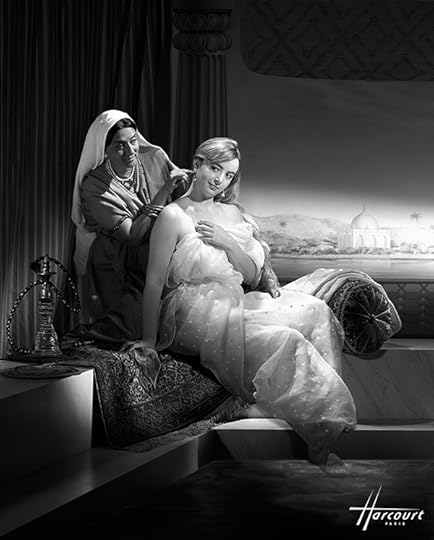
Pushpamala N. with Studio Harcourt, The Slave and her Slave (After Ingres), 2009, from the series The Harcourt Set
Pushpamala N.
Among the most internationally recognized artists on view is Pushpamala N. Her project The Harcourt Set (2009) was commissioned for a show at the Centre Pompidou, Paris. For this work, the artist collaborated with the famous Studio Harcourt—known for its polished photographs of film stars—to recreate iconic images from nineteenth-century France.

Tenzing Dakpa, Arrival, 2016, from the series The Hotel
Courtesy the artist
Tenzing Dakpa
Tenzing Dakpa’s series The Hotel, shot in high-contrast black and white, is based on his family’s own hotel and his hometown of Gangtok, Sikkim. Playing on themes of cultural displacement—Dakpa is a second-generation Tibetan who moved to New Delhi and then to the United States, where he studied at the Rhode Island School of Design—he enacts an oblique narrative of his family as they move through the daily motions of hotel upkeep, performing memories of what the artist describes as a “temporal existence introducedby migration.”

Sandip Kuriakose, Interested, 2017, from the series NPNR
Courtesy the artist
Sandip Kuriakose
Kuriakose’s work takes on photography as it operates in digital space, delving into the language of images posted to gay dating sites, which become both a means of communication and a performance of identity.

Vidisha Saini, Mr. Shekar House, 2012, from the series Mr. Shekar
Courtesy the artist
Vidisha Saini
A highlight of the festival is Vidisha Saini’s installation of inkjet prints on newspaper, which have the subtle palette of watercolor. The project, You Like Mr. Shekhar, hones in on the story of Hampi, a village in the state of Karnataka. Once the capital of the largest Hindu Empire, the village eventually became abandoned, before becoming a UNESCO World Heritage Site in the 1980s. More recently, families living there have been relocated from the location to conserve the architecture. Saini’s installation—with vitrines of castaway objects, presumably from the families who have left—amounts to a form of archaeology on the part of the artist.

Gauri Gill, Untitled, 1999–2007, from the series Jannat
Courtesy the artist
Gauri Gill
Gauri Gill is celebrated for her 2012 photobook, BalikaMela, composed of deceptively simple yet poignant portraits of young girls at a fair in Rajasthan, Western India. At FotoFest, Gill’s series of forty-four gelatin-silver prints, installed sequentially in cinematic storyboard fashion, focus on the daily life of a young girl living in a Muslim settlement in a stark desert environment.
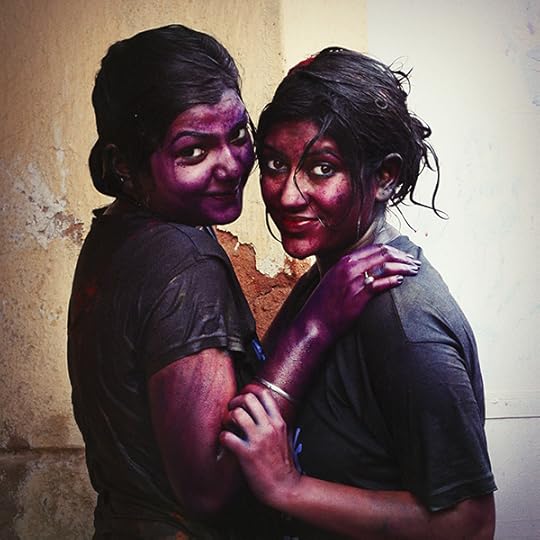
Anoop Ray, Untitled, March 2012, from the series Friends and Their Friends, 2010–15
Courtesy the Artist
Anoop Ray
Anoop Ray adds to photography’s longstanding diaristic tradition of dissolving barriers and turning the camera on those in one’s immediate circle—in this case, the intimate moments of his friend group.
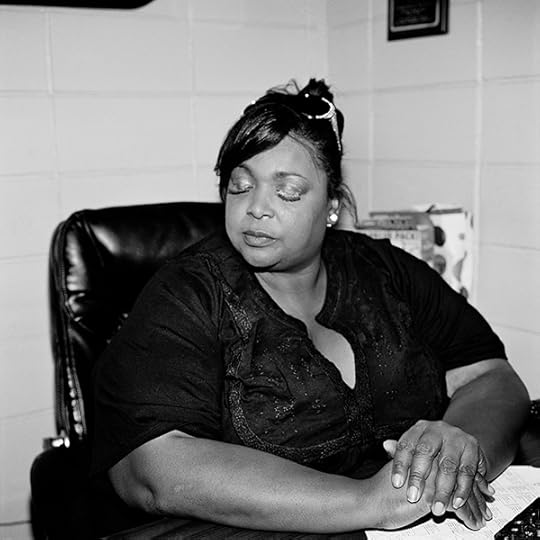
Sohrab Hura, Pam “Oprah of the South” Chatman, the First Female African-American News Director in the State of Mississippi, Greenville, Mississippi, 2016, from the series The Levee
Courtesy the artist, Pier 24, San Francisco, and Postcards from America
Sohrab Hura
Sohrab Hura, who is based in New Delhi, traveled throughout the American South to make this body of work. He was originally motivated by images his father had made in the region, earlier on, when he had been employed as a sailor on a commercial ship. Hura plays with the idea of being an outsider, wandering a geography that is haunted by history and local stereotypes that he encountered on the other side of the world.
Michael Famighetti is the editor of Aperture magazine.
India: Contemporary Photography and New Media Art is on view in Houston, Texas, through April 22, 2018. Modernism on the Ganges: Raghubir Singh Photographs is on view at the Museum of Fine Arts, Houston, through June 3, 2018.
The post India Takes Houston appeared first on Aperture Foundation NY.
April 18, 2018
If Photographs Could Talk
How has an experimental platform for photographers created a new form of image making?
By Max Campbell


Eric Ruby (in conversation with Damien Maloney), February 17, 2017
© the artist and courtesy A New Nothing

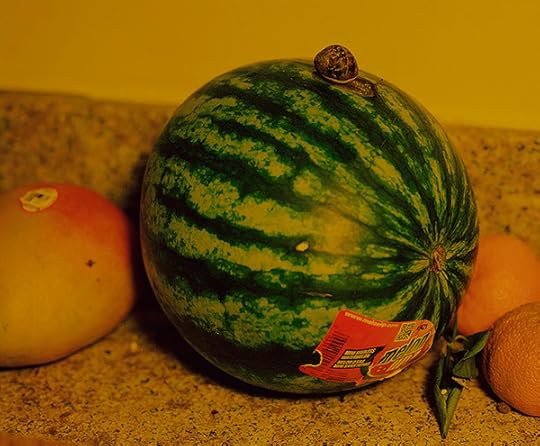
Damien Maloney (in conversation with Eric Ruby), March 20, 2017
© the artist and courtesy A New Nothing

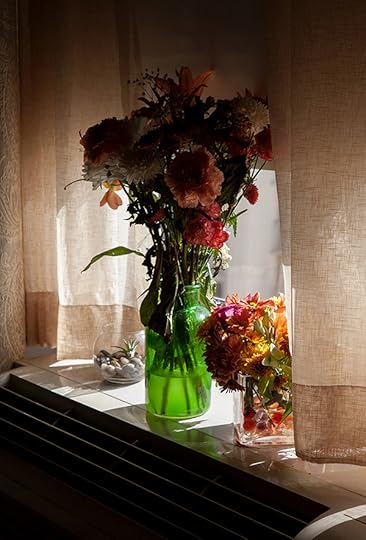
Peter Happel Christian (in conversation with Joy Drury Cox), October 23, 2016
© the artist and courtesy A New Nothing


Joy Drury Cox (in conversation with Peter Happel Christian), November 8, 2016
© the artist and courtesy A New Nothing


Jenia Fridyland (in conversation with Aya Fujioka), January 5, 2017
© the artist and courtesy A New Nothing

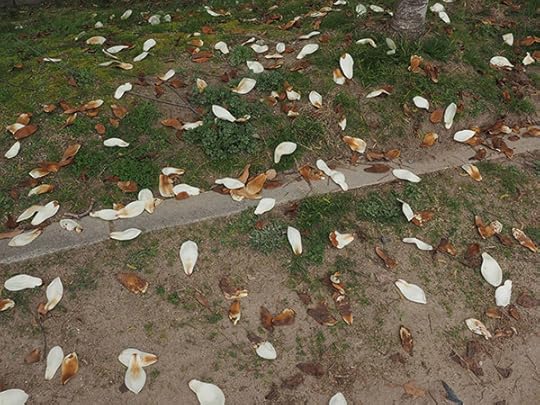
Aya Fujioka (in conversation with Jenia Fridyland), January 31, 2017
© the artist and courtesy A New Nothing


Arthur Ou (in conversation with Grant Yarolin), September 20, 2016
© the artist and courtesy A New Nothing


Grant Yarolin (in conversation with Arthur Ou), October 5, 2016
© the artist and courtesy A New Nothing

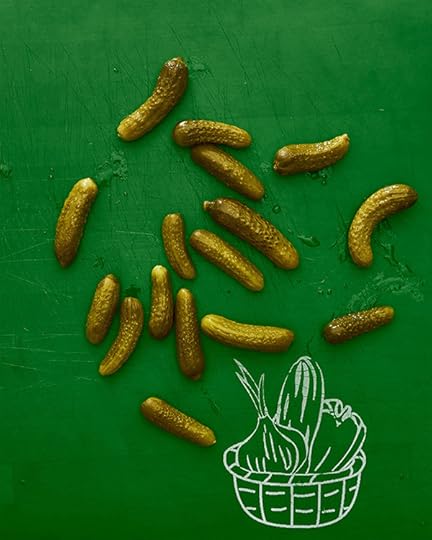
Corey Olsen (in conversation with David Brandon Geeting), September 15, 2016
© the artist and courtesy A New Nothing

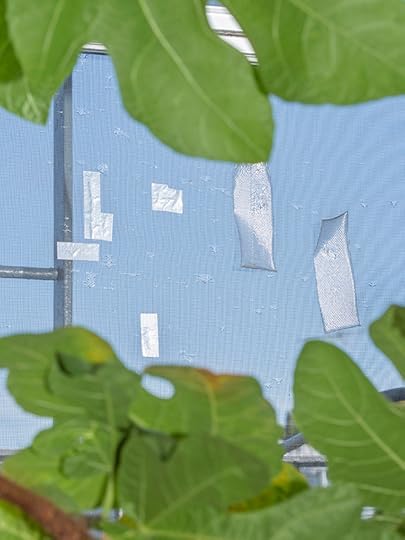
David Brandon Geeting (in conversation with Corey Olsen), September 17, 2016
© the artist and courtesy A New Nothing

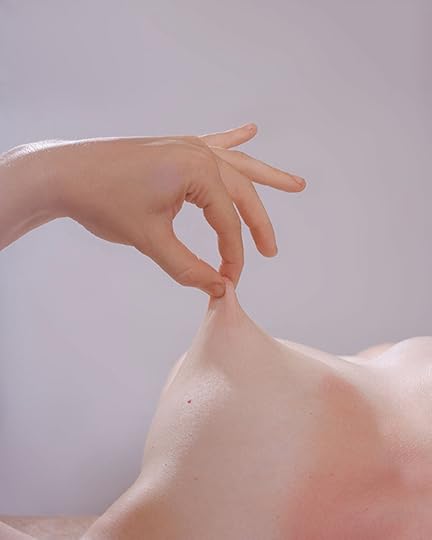
Caroline Tompkins (in conversation with Ryan Lowry), September 20, 2016
© the artist and courtesy A New Nothing

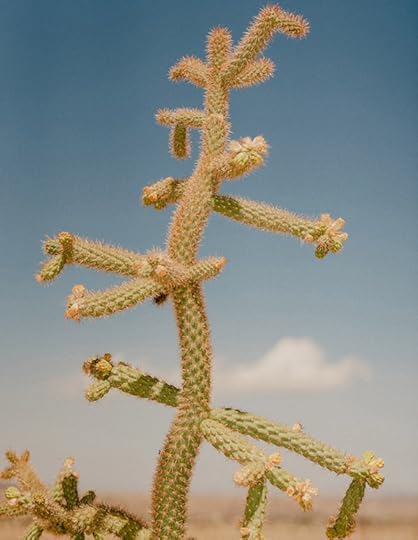
Ryan Lowry (in conversation with Caroline Tompkins), September 25, 2016
© the artist and courtesy A New Nothing

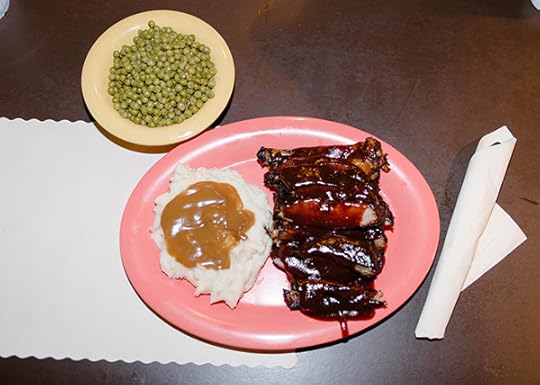
Tag Christof (in conversation with Maggie Shannon), May 16, 2017
© the artist and courtesy A New Nothing

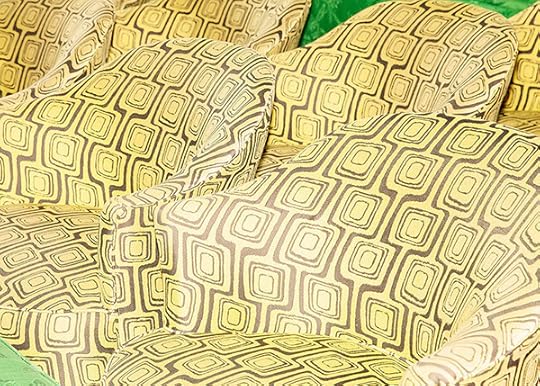
Maggie Shannon (in conversation with Tag Christof), May 22, 2017
© the artist and courtesy A New Nothing

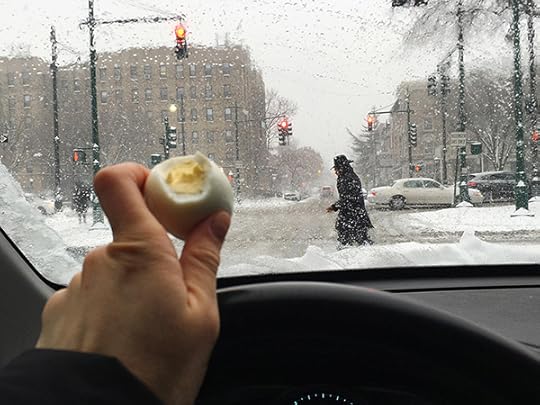
Irina Rozovsky (in conversation with Mark Steinmetz), January 18, 2017
© the artist and courtesy A New Nothing

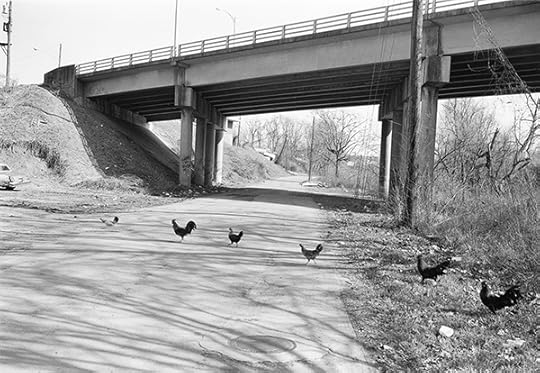
Mark Steinmetz (in conversation with Irina Rozovsky), January 25, 2017
© the artist and courtesy A New Nothing
What does it mean to talk in photographs? In 2014, the photographers Ben Alper and Nat Ward started an image-based conversation, and they haven’t stopped talking since. A lot has come up in that time, and, through alternating contributions, their exchange has covered topics such as violence, fantasy, patriotism, nature, and death. The dialogue formed as an open-ended experiment, but they have stuck to the same format throughout: a photograph from one, a photograph from the other, repeat.
“It’s like an ‘exquisite corpse’ exercise, or the sequencing of a book of photographs,” Ward said recently. “The visual content has to talk from one image to the next, making and augmenting a legible kind of meaning along the way.” It didn’t take long for a compelling rhythm to emerge in Alper and Ward’s give-and-take, which stirred up curiosity about how other photographers might use pictures to talk. They invited friends to start conversations of their own and the project expanded outward from there. Today, A New Nothing, the website Alper and Ward created to house these exchanges, has over one hundred active contributors.

Mark Steinmetz, January 25, 2017
© the artist and courtesy A New Nothing
The parameters of the project are simple, but A New Nothing is full of layered and provocative interactions. A column of paired names works as the table of contents on the website, each pair cueing a gallery containing the back-and-forth between two photographers. Images are accompanied only by bare-bones captions that list the date the post went up and the contributing photographer’s initials. There are no statements or bios, and each exchange moves at its own pace (in some, weeks pass between posts).
The pattern of alternating posts established in Alper and Ward’s founding interaction unites the conversations. Otherwise, each duo develops the tone and guiding principles organically, as their discussion unfolds. “Those impulses and decisions remain largely hidden or unverbalized,” Alper said. If photographers decide they no longer want to continue participating the contributed work remains online in archived conversations (some of which Alper and Ward plan to release in book form in the future), but such end points are never established up front. Context and intention here are meant to evolve publicly.

Eric Ruby, February 17, 2017
© the artist and courtesy A New Nothing
Sometimes, it’s easy to make out the connective tissue between individual photographs in the conversations. “Talking” often means making playful turns to echo and invert colors and shapes between pictures. In a photograph by Eric Ruby, someone has slung a friend over their shoulder to carry them down the beach. As a response, Damien Maloney shows us a snail atop a green melon; the tie-dyed striping on a T-shirt in Ruby’s picture has jumped to the melon’s skin in Maloney’s scene. When images are enlisted as responses and rebuttals, compositional elements might be mimicked repeatedly, until the original form dissolves, like an object fading into its own reflection between two mirrors, or a message getting garbled in that children’s game “telephone.” Certain subjects will appear and then travel between frames. In a conversation between Joy Drury Cox and Peter Happel Christian, we see flowers, wrapped and ready to be bought, then backlit on a windowsill, and, before the motif is abandoned, placed in vases affixed to headstones.

Peter Happel Christian, October 23, 2016
© the artist and courtesy A New Nothing
As subject matter and form are batted back and forth between two photographers, as if over a tennis net, stylistic choices take on a gestural quality. Because photographers get to choose whether to recognize, reject, or repeat elements in their partner’s picture, their aesthetic inclinations look a bit like character traits. Tracking the patterns, or the flowers, or the range of greens that bridge from a pack of pickles sprawled on a painted surface to a tree-shaped car air-freshener floating in some sludge, we see lots of clever ways to shift expectations.
We also see how talking in pictures, like any sort of conversation, reveals the interlocutors’ dispositions. Photographers whose work pulls from too expansive a palette, either aesthetically or in terms of subject matter, might seem scattered or ineloquent. On the other hand, sticking too closely to a subject, like when Arthur Ou posted only photographs of tree trunks in his conversation with Grant Yarolin, might make you look stubborn or obsessed.

Corey Olsen, September 15, 2016
© the artist and courtesy A New Nothing
Many photographers appear liberated by the purpose (or purposelessness) of the format, which encourages a particular sort of uninhibited expression. Humor often results. One of Irina Rozovsky’s photographs was shot from the driver’s seat of a car on a snowy day. On the camera’s side of the windshield, a hand is pinching a hard-boiled egg between thumb and forefinger. A bite is missing from the egg and, outside in the slush, a bundled man is in the middle of the crosswalk. In response, Mark Steinmetz shows us a line of chickens crossing the road. Why? Because of the driver’s snack.

Grant Yarolin, October 5, 2016
© the artist and courtesy A New Nothing
“It’s this sort of prism of different places, different things, linked by something unspoken,” Rozovsky said of her conversation with Steinmetz. Their exchange began with two photographs of the same scene, taken in Athens, Georgia, in 2014, while Rozovsky was visiting Steinmetz. They were friends then and have since moved in together and had a child, continuing the conversation throughout. The exchange “loses a little bit of energy when you’re together, seeing the same things,” she said. “But it’s really fascinating when you’re in different parts of the world. The resonance of the echo across the divide is really exciting.” Methods for these visual interactions—the flipping, the mirroring, the inversion of ideas—have a give-and-take quality good for shaping everything from visual puns to the bridging Rozovsky describes.

Mark Steinmetz, January 18, 2017
© the artist and courtesy A New Nothing
Divorcing these images from traditional sequence editing, accompanying text, and layout decisions creates a spare, fluid atmosphere where subjectivity swells. At the same time, there is this unspoken but apparent etiquette in each conversation on A New Nothing, and the tension between those aspects is part of what makes the project such an engaging trove. Messaging here rides entirely on the form and content within the frame, and the capacity of individual photographs expands in unlikely ways. We watch as it happens, guessing at what will be said next. All of this makes scrolling through the conversations feel like listening in on friends talking in the codes of inside jokes reserved for private spaces, or, as Ward said, “like reading the body language between two people at the other end of a bar.” The playfulness, the humor, and the challenges the conversations present have a way of deflating—rather refreshingly—the objective authority photographs so often assume.
Max Campbell is a writer and photographer based in New York.
The post If Photographs Could Talk appeared first on Aperture Foundation NY.
The Myth of Brazil’s Racial Democracy
In a new exhibition, Jonathas de Andrade confronts his country’s complicated past and present.
By Amelia Rina
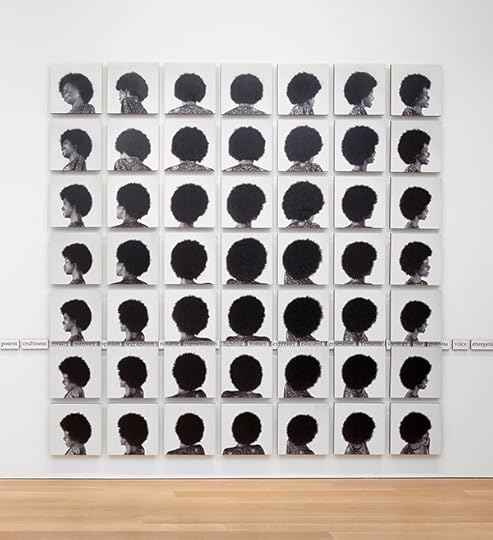
Jonathas de Andrade, Eu, mestiço, 2017–18
Courtesy Alexander and Bonin, New York
“Brazil is renowned in the world for its racial democracy,” begins anthropologist Charles Wagley in the 1952 study Race and Class in Rural Brazil. Produced by Columbia University and UNESCO, the text describes ethnographic studies performed by Wagley and his colleagues in four regions of Brazil. In each region, men and women from what they determined to be the four major racial groups—caboclo (indigenous and Afro-Brazilian), preto (Afro-Brazilian), mulato (Afro-Brazilian and white European), and branco (white European)—were shown photographs of other Brazilians from these categories and then asked to assign them different traits, such as most/least attractive, best/worst worker, most/least honest, most/least wealthy, et cetera. This binary restriction was one of the study’s major flaws that first intrigued Brazilian artist Jonathas de Andrade, and inspired his recent project, Eu, mestiço, currently on view at Alexander and Bonin.
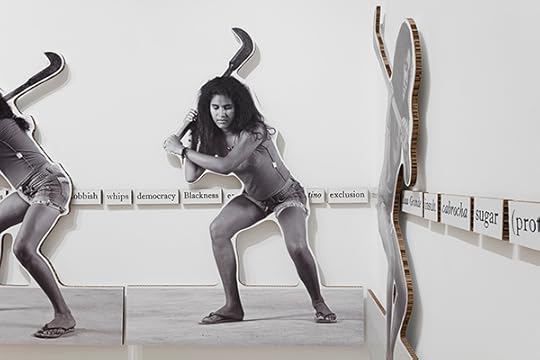
Jonathas de Andrade, Eu, mestiço, 2017–18
Courtesy Alexander and Bonin, New York
The introduction quickly reveals the study’s extreme outdatedness and the internalized racism and discrimination of the supposedly neutral scientists. Wagley goes on to support his hypothesis of racial tolerance by citing that “the Portuguese colonizer of Brazil was as compared with many Europeans, singularly lacking in race prejudice, and in fact the Portuguese male colonist seemed to have felt a rather strong attraction to the darker Amerind and Negro women.” By categorizing their subjects in such a way, the scientists confirmed their biases. Instead of being able to spontaneously describe the individuals in the photographs, they confined the subjects to this polarizing language.
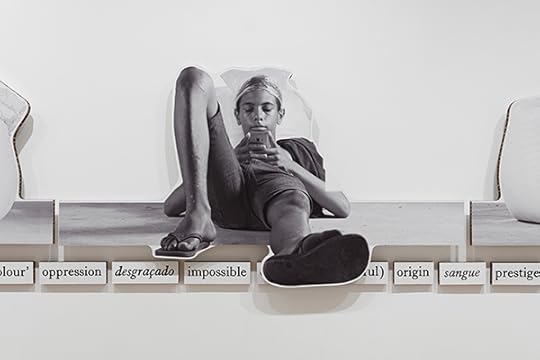
Jonathas de Andrade, Eu, mestiço, 2017–18
Courtesy Alexander and Bonin, New York
“The study used a methodology, based on photographs, to tease participants into being racists, and invited them to judge the characters in the photographs,” de Andrade told me recently. The final publication also omits the original images used, effectively leaving the reader with an elaborate list of racist expressions and stereotypes, but no context. For his photographic series Eu, mestiço (Me, mestizo) (2018), de Andrade also provides an incomplete narrative—with one major difference. Unlike the scientists before him, de Andrade flips the observer/observed, active/passive relationship by giving agency back to those who would otherwise be powerless subjects. De Andrade traveled to several cities in Brazil and presented people with the UNESCO study, then invited them to physically perform their interpretation of the social types described in the text. The resulting photographs provide both a critique of the colonialist quantifying and categorizing of human bodies, and a self-aware critique of race and class stereotypes that have perpetuated through the decades.

Jonathas de Andrade, Eu, mestiço, 2017–18
Courtesy Alexander and Bonin, New York
Within moments of walking into the spacious Alexander and Bonin gallery, the observer takes in an exhibition that begins as an exercise in free association, but quickly becomes uncomfortable. Large black-and-white halftone images of people printed on falconboard, a material typical of mass-produced signboards in Brazil, float throughout the gallery in grids and linear sequences. Some of the images are rectangular, while others are presented as cutouts tracing the subjects’ contours. A steady line of individually mounted words taken from Race and Class in Rural Brazil sits like a horizon around and behind the images. De Andrade forces viewers to confront their associations with words like “whips,” “escuro” (“dark”), “sugar,” “sophistication,” “carcass,” “criminal,” “rich,” “nordestino” (“northeastern”), and “mixed,” and the images of people of various races performing various actions.
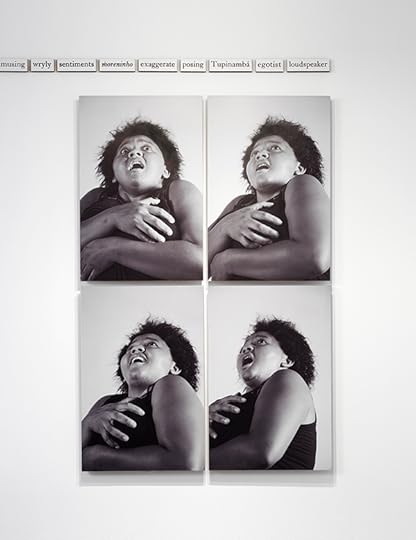
Jonathas de Andrade, Eu, mestiço, 2017–18
Courtesy Alexander and Bonin, New York
Yet, as though to indicate that no experience can ever be condensed to simply one word and one image, each person appears from at least three different angles or expressions. In one sequence, a young woman grabs her chest and leans back in shock or fear. In another, a woman with short white hair faces away from the camera, revealing the elegant lace decorating the back of her blouse. In yet another, a lanky young man gazes into and away from the camera, as it captures his casually angular repose from different viewpoints. The images, some glamorous and some absurd, also prompt speculation about which stereotype each person was performing, which further elicits the viewer’s internalized bias. Is the man carrying the apparently heavy sack a hard worker or lazy? Are the two young girls staring confidently into the camera poised or haughty? The text in combination with the almost stop-motion aesthetic of the multiple images creates a continuous yet nonsensical narrative of discrimination and hijacked identities.
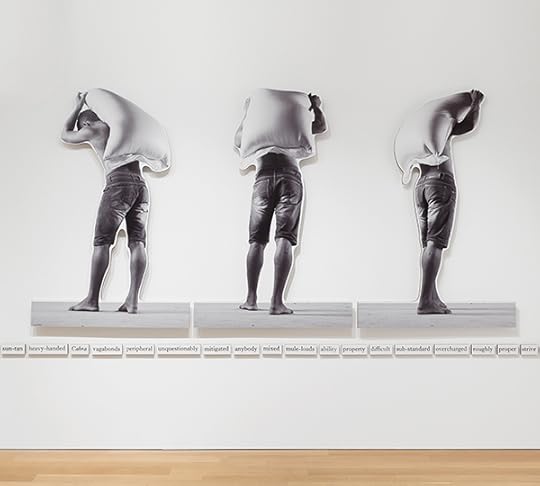
Jonathas de Andrade, Eu, mestiço, 2017–18
Courtesy Alexander and Bonin, New York
Instead of a didactic text that might do little to challenge the author or reader, de Andrade has facilitated a heuristic experience that reveals viewers’ opinions to themselves. The text and images force viewers to confront their immediate associations and internalized judgements. By referencing, not replicating, the original photographs, the pairing also breaks down the assumed veracity of documentary photographs in scientific studies, and challenges the historical credibility of the photographic object. In Eu, mestiço, de Andrade presents a direct satire of the UNESCO study, especially its declaration of Brazil’s supposed racial democracy, which de Andrade says is a “dangerous myth”: “The concept of racial democracy . . . has been used to diminish the presence of racism as it is absorbed in many layers of daily life.” In today’s current tumultuous political climate, Eu, mestiço will resonate with those coming together to fight against authoritarianism and other forms of oppression by encouraging the indispensable act of critical introspection.
Amelia Rina is a writer based in New York.
Jonathas de Andrade: Eu, mestiço is on view at Alexander and Bonin, New York, through April 21, 2018.
The post The Myth of Brazil’s Racial Democracy appeared first on Aperture Foundation NY.
April 11, 2018
Inside Aperture’s 2018 Spring Party
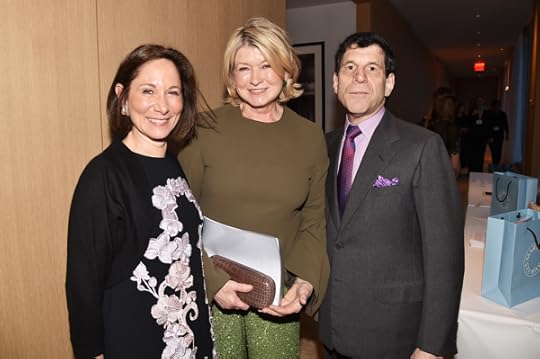

Dr. Ruth Oratz, host Martha Stewart, and Dr. Albert Knapp
Patrick McMullan/PMC © Patrick McMullan


Regina DeLuise, sponsor Stuart Cooper, and Susan Belsinger
Patrick McMullan/PMC © Patrick McMullan


Angela Dimayuga and Spike Jonze
Sean Zanni/PMC © Patrick McMullan


Zsela
Patrick McMullan/PMC © Patrick McMullan


Gabrielle and Andrea D'Avack
Patrick McMullan/PMC © Patrick McMullan

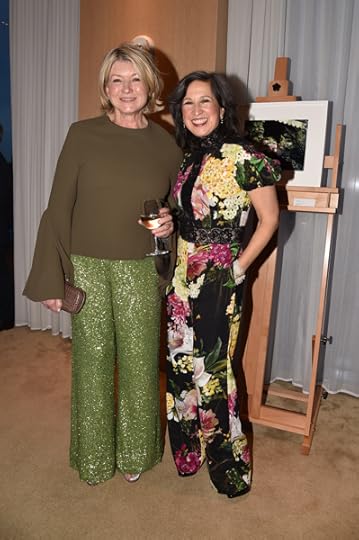
Martha Stewart and Elizabeth Ann Kahane
Patrick McMullan/PMC © Patrick McMullan

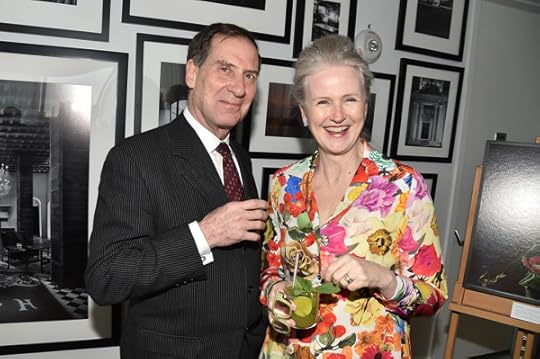
Ian Wardropper and host Sarah Anne McNear
Patrick McMullan/PMC © Patrick McMullan

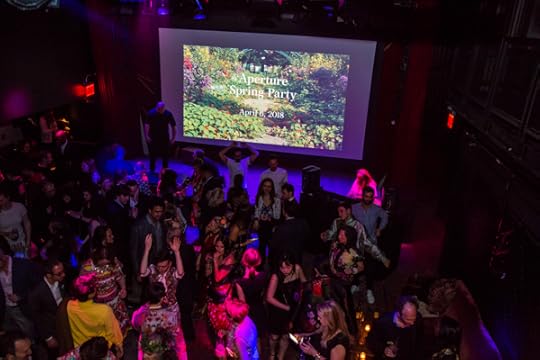
The Aperture Spring Party at PUBLIC ARTS
Michelle Kim © Aperture


Zsela and Angela Dimayuga
Michelle Kim © Aperture

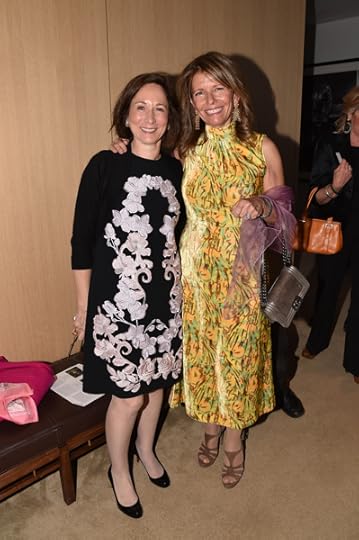
Dr. Ruth Oratz and Jessica Nagle
Patrick McMullan/PMC © Patrick McMullan


Samuel Lawson, Elizabeth Ann Kahane, and Brett Allen
Patrick McMullan/PMC © Patrick McMullan

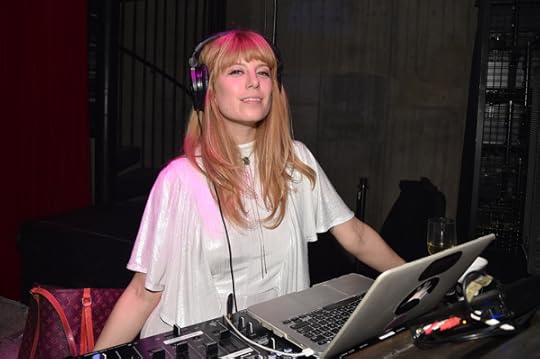
Alix Brown
Patrick McMullan/PMC © Patrick McMullan

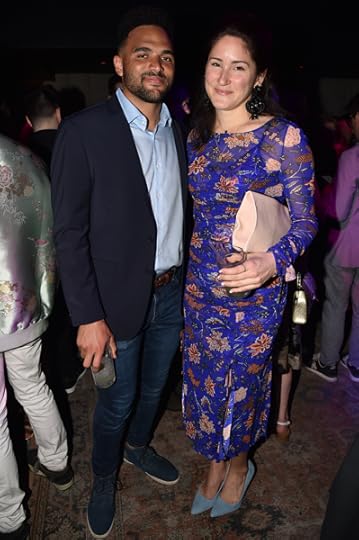
Andre Akpan and Adrienne Collatos
Patrick McMullan/PMC © Patrick McMullan


Dianna Cohen and Alexander Hurst
Madison Reid © Aperture


Floral arrangement by Saipua
Michelle Kim © Aperture


Jessica Nagle, Hemant Kanakia, and Dr. Sonalde Desai
Sean Zanni/PMC © Patrick McMullan

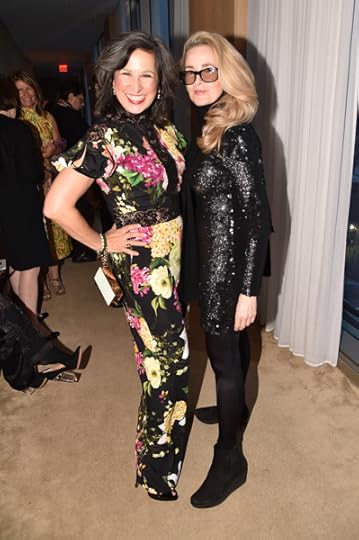
Elizabeth Ann Kahane and Lindsay McCrum
Patrick McMullan/PMC © Patrick McMullan

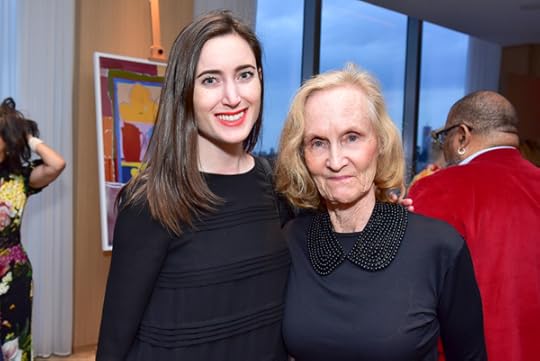
Emma Bowen and Tina Barney
Sean Zanni/PMC © Patrick McMullan

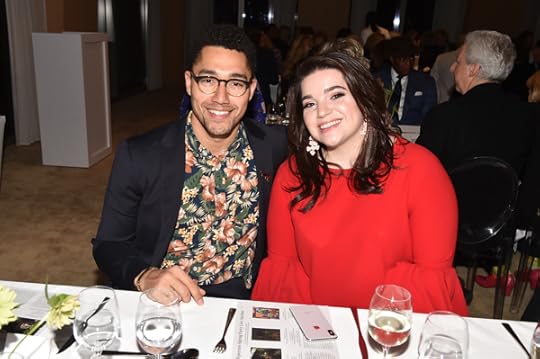
Florian Koenigsberger and Victoria Schorsch
Patrick McMullan/PMC © Patrick McMullan

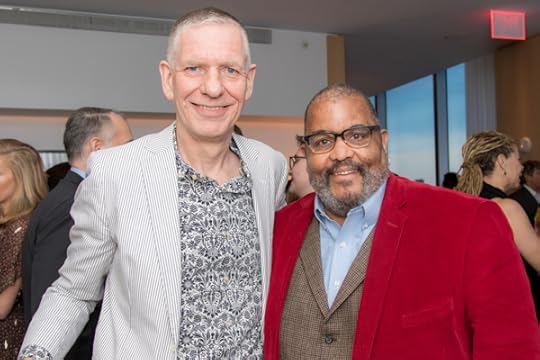
Aperture executive director Chris Boot and Dawoud Bey
Madison Reid © Aperture


Hemant Kanakia, Dr. Sonalde Desai, Dr. Deborah Willis, Hank Thomas, Sr., and Elaine Goldman
Madison Reid © Aperture


George Rabot, Zoe Suna, and Liz Grover
Madison Reid © Aperture


Lisa Rosenblum and Nina Celebic
Patrick McMullan/PMC © Patrick McMullan

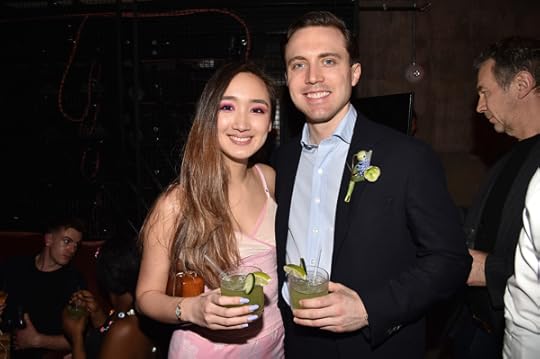
Louise Lui and Colton Klein
Patrick McMullan/PMC © Patrick McMullan

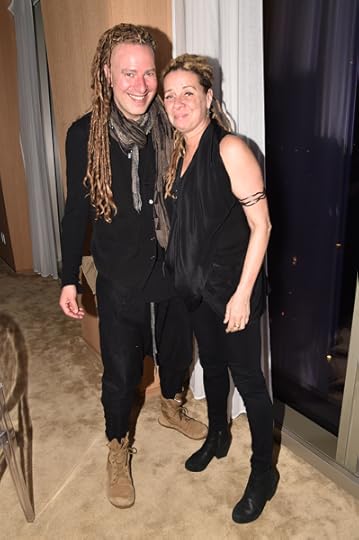
Tim Doody and Lisa Corinne Davis
Patrick McMullan/PMC © Patrick McMullan


Host Stephen Shore and Anne Stark Locher
Sean Zanni/PMC © Patrick McMullan


Neil Lester and Filip Vurdelja
Patrick McMullan/PMC © Patrick McMullan

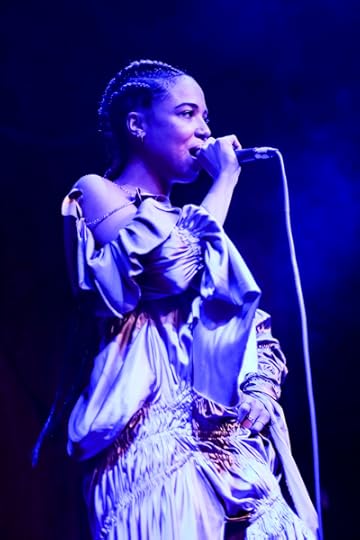
Zsela
Sean Zanni/PMC © Patrick McMullan


Alex Berggruen and host Martha Stewart
Madison Reid © Aperture

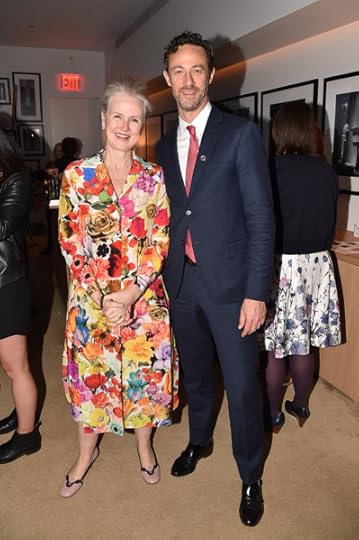
Host Sarah Anne McNear and Darius Himes
Patrick McMullan/PMC © Patrick McMullan


Nina Rosenblum and Dan Allentuck
Patrick McMullan/PMC © Patrick McMullan


Yasufumi Nakamori, Lesley A. Martin, and Elena Dorfman
Patrick McMullan/PMC © Patrick McMullan

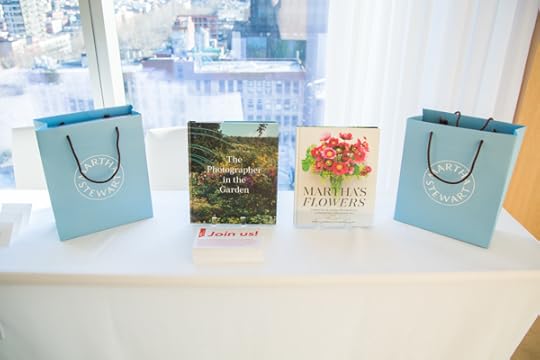
Michelle Kim © Aperture


Anne Stark Locher, Whit Williams, and Kate Cordsen
Patrick McMullan/PMC © Patrick McMullan


Alex Berggruen
Madison Reid © Aperture


Aperture executive director Chris Boot, Susan Gutfreund, host Sarah Anne McNear, and Tony WhiteMichelle Kim © Aperture


Allan Chapin, Anna Rachminov, Lisa Corinne Davis, and Jonathan Gould
Patrick McMullan/PMC © Patrick McMullan

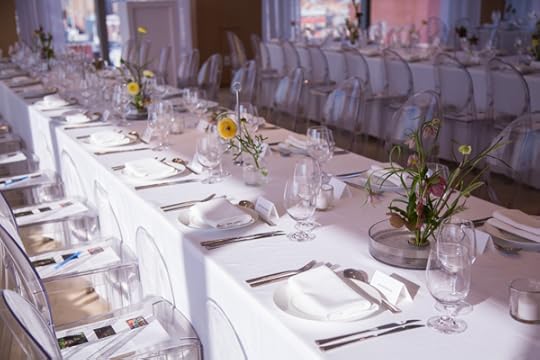
Michelle Kim © Aperture


Tina Barney and Emma Bowen
Patrick McMullan/PMC © Patrick McMullan

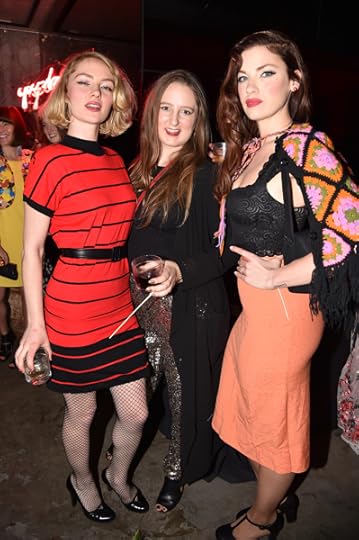
Amy Hood, Callie Roth, and Bode
Patrick McMullan/PMC © Patrick McMullan


Marx Goldberg and Ethan James Green
Sean Zanni/PMC © Patrick McMullan

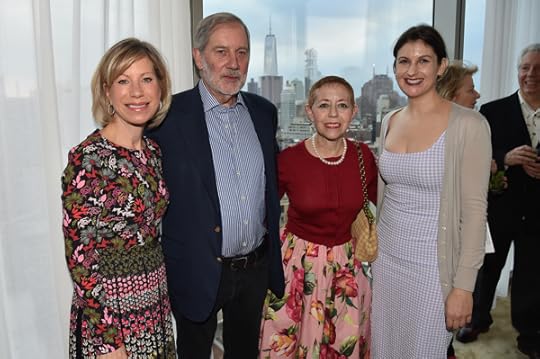
Missy O'Shaughnessy, Allan Chapin, Aperture board chair Cathy Kaplan, and Emily Grillo
Patrick McMullan/PMC © Patrick McMullan


Aperture Spring Party guests Madison Reid © Aperture


Aperture board chair Cathy Kaplan and Darlene Kaplan
Patrick McMullan/PMC © Patrick McMullan

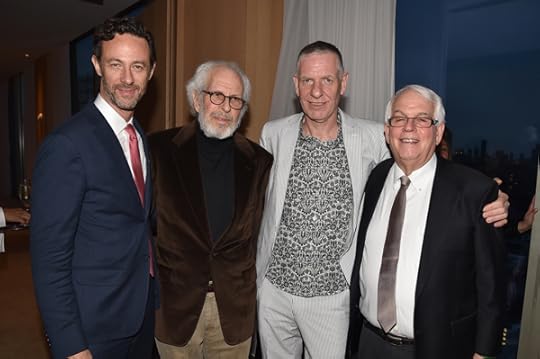
Darius Himes, host Stephen Shore, Aperture executive director Chris Boot, and Tom Schiff
Patrick McMullan/PMC © Patrick McMullan


Elizabeth Ann Kahane and Mariane Ibrahim
Patrick McMullan/PMC © Patrick McMullan

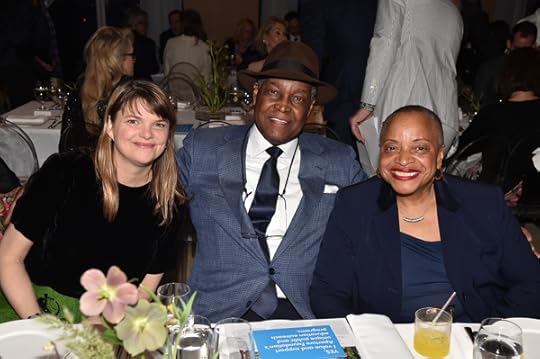
Kellie McLaughlin, Hank Thomas, Sr., and Dr. Deborah Willis
Patrick McMullan/PMC © Patrick McMullan


Leonard Lauder and Judy Glickman Lauder
Patrick McMullan/PMC © Patrick McMullan


Host Martha Stewart with cupcakes by Brooklyn Floral Delight
Patrick McMullan/PMC © Patrick McMullan


Michael Hoeh and Aperture executive director Chris Boot
Patrick McMullan/PMC © Patrick McMullan

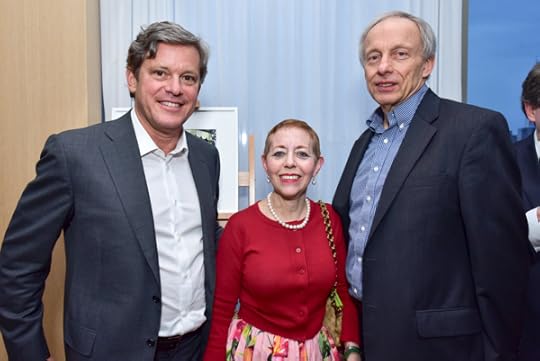
Roland Hartley-Urquhart, Aperture board chair Cathy Kaplan, and Renwick Martin
Sean Zanni/PMC © Patrick McMullan


Susan Gutfreund, Lucky, and Judy Glickman Lauder
Sean Zanni/PMC © Patrick McMullan

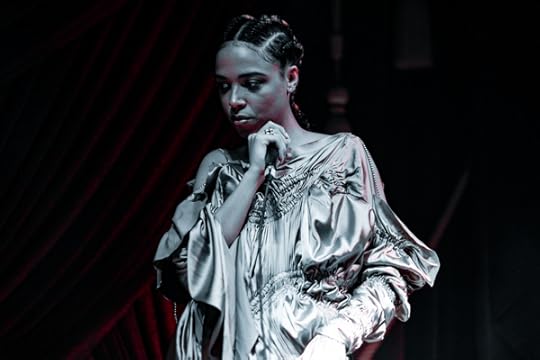
Zsela
Sean Zanni/PMC © Patrick McMullan


Sharon Core
Patrick McMullan/PMC © Patrick McMullan

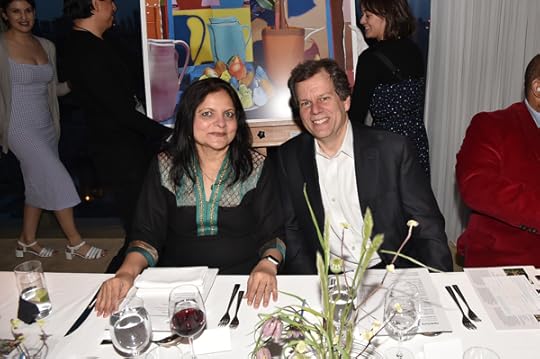
Dr. Sonalde Desai and Kurt LocherPatrick McMullan/PMC © Patrick McMullan


Matt Lucero and Priyanka Pulijal
Sean Zanni/PMC © Patrick McMullan

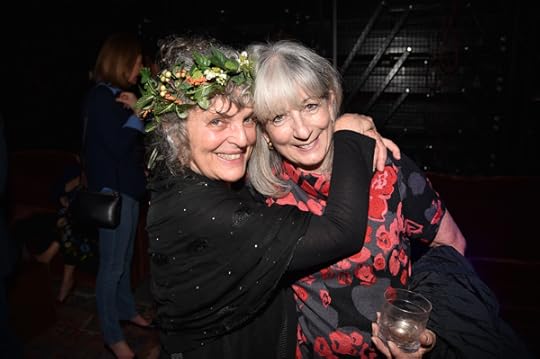
Susan Belsinger and sponsor Rebecca Besson
Patrick McMullan/PMC © Patrick McMullan

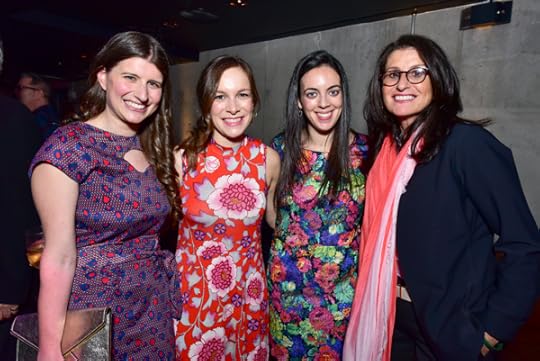
Liz Grover, April Havranek, Michelle Gladd, and Lori Grover
Sean Zanni/PMC © Patrick McMullan


Hosts Martha Stewart and Sarah Anne McNear, Leonard Lauder, Judy Glickman Lauder, and Aperture board chair Cathy Kaplan
Patrick McMullan/PMC © Patrick McMullanPatrick McMullan/PMC


David and Sally Park with Nathaniel Stein
Patrick McMullan/PMC © Patrick McMullan

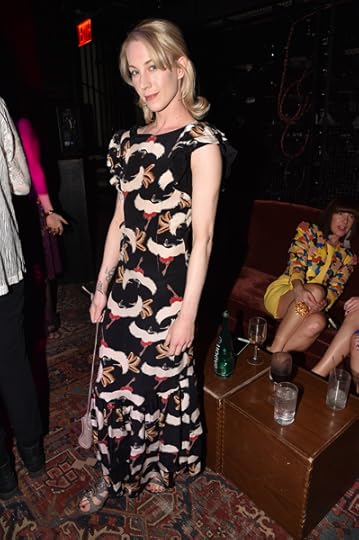
Christina Swilley
Patrick McMullan/PMC © Patrick McMullan


Zsela
Sean Zanni/PMC © Patrick McMullan

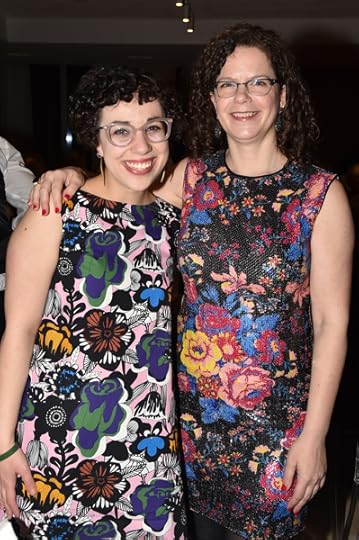
Esther Zuckerman and Denise Wolff
Patrick McMullan/PMC © Patrick McMullan

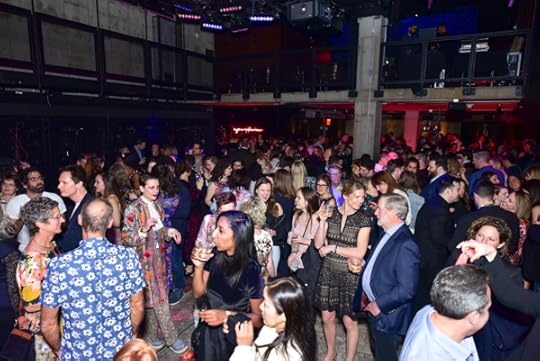
Sean Zanni/PMC © Patrick McMullan
The 2018 Aperture Spring Party, held on April 6, was a much-anticipated happening for photography enthusiasts in New York during The Photography Show presented by AIPAD. Guests were decked out in vibrant floral patterns inspired by blooms—on dresses, skirts, blazers, and jumpsuits. Celebrating the pre-launch of Aperture’s forthcoming book The Photographer in the Garden, the nearly three hundred guests who attended enjoyed an evening of food, music, and dancing with Garden’s coauthors Sarah Anne McNear and Jamie M. Allen. The event was sponsored by Sb Cooper and R. L. Besson, Besson/Cooper Fund, and cohosted by McNear, along with Martha Stewart and Ginger and Stephen Shore. Event and auction proceeds support Aperture serving the art, story, and community of photography through publications and educational programs with the world’s leading photographers, artists, scholars, and authors.
A familial pre-party dinner with approximately one hundred of Aperture’s closest friends took place on the seventeenth floor of the Public Hotel with panoramic views of Manhattan. Guests were seated with Garden contributors, including McNear, Shore, Allen, and photographers Tina Barney and Sharon Core. Barney and Core, along with Daniel Gordon, contributed prints to a live auction conducted by Alex Berggruen of Christie’s. Dinner guests received gratis copies of Martha’s Flowers and The Photographer in the Garden, gifted by Martha Stewart and Aperture trustee Michael Hoeh.
The Spring Party, held at Public Arts, was hosted by Aperture’s Connect Member group of young leaders and other individuals. Guests sipped on cucumber and mint cocktails courtesy of VDKA 6100 and posed around the photo set powered by HYPNO, with a vibrant floral installation by Saipua and a neon Aperture sign. Among the mix of guests who attended were Darius Himes, Dr. Deborah Willis, Spike Jonze, Angela Dimayuga, Andrea and Gabrielle d’Avack, Leonard Lauder and Judy Glickman Lauder, Elizabeth Ann Kahane, Ethan James Green, Alex and Rebecca Webb, John Chiara, Mitch Epstein, and Penelope Umbrico. The highlight of the night was an enchanting performance by Brooklyn native singer-songwriter Zsela, accompanied by Daniel Aged on piano. (Zsela is currently working on a debut release for later this year.) Alix Brown wrapped up the night with sets that inspired a lively dance party until after midnight.
Courtesy of Patrick McMullan Company, click here to view photos from the event. Additionally, view the HYPNO booth photos by clicking here.
Aperture wishes to thank cohosts Martha Stewart, Ginger and Stephen Shore, and Sarah Anne McNear; sponsors Sb Cooper and R. L. Besson, Besson/Cooper Fund; George Eastman Museum’s Jamie M. Allen; all of the contributing Garden photographers; Christie’s; photograph magazine; Saipua; VDKA 6100; Zsela; Daniel Aged; and Alix Brown.
Additional thanks goes to the Leaders, the Host and the Spring Party Committees, and to all of the Aperture staff, work scholars, volunteers, and ambassadors for their time and dedication.
Sponsors
Sb Cooper and R. L. Besson, Besson/Cooper Fund
Leaders
Allan Chapin and Anna Rachminov
Anonymous
Bill and Victoria Cherry
Cathy M. Kaplan
Elaine Goldman and John Benis
Nion McEvoy
Thomas R. Schiff
Host Committee
Anne and Kurt Locher
Anonymous
Betsy Evans Hunt and Christopher Hunt
Darius Himes, Christie’s
Darlene Kaplan and Steve Zuckerman
Dr. Albert Knapp and Dr. Ruth Oratz
Elizabeth Ann Kahane
Hemant Kanakia and Sonalde Desai
Howard Greenberg
Jessica Nagle and Roland Hartley-Urquhart
Kate Cordsen
L.C. Wisnewski
Leonard and Judy Lauder
Malú Alvarez
Mark and Elizabeth Levine
Martha Stewart
Michael Hoeh
Missy and Jim O’Shaughnessy
Mrs. John (Susan) Gutfreund
M&T Charitable Foundation
Peter Barbur and Tim Doody
Rita Anthoine
Sarah McNear and Ian Wardropper
Victoria Schorsch
Whit Williams
Willard Taylor and Virginia Davies
Spring Party Committee
Alexander Hurst
Angela Dimayuga
Dianna Cohen
Liz Grover
Liz Higgins
Michael Sbabo
Paula Naughton
Sam Pritzker
Sarah F. Haimes
Tanya and David Wells
Tim Matusch
Todd Wiener
The post Inside Aperture’s 2018 Spring Party appeared first on Aperture Foundation NY.
In Marrakech, African Photography on Its Own Terms
A new museum in Morocco becomes a destination for contemporary art.
By Sean O’Toole

Leila Alaoui, Khamlia, Sud du Maroc #1, 2014, from the series The Moroccans
© Fondation Leila Alaoui
The life and work of Leila Alaoui, the celebrated Moroccan documentary photographer, looms large over Marrakech’s newest art institution. Alaoui, who at age thirty-three was shot and killed during an al-Qaeda attack in Ouagadougou, Burkina Faso, was a close friend of Othman Lazraq, the photography-enthused president of the Museum of African Contemporary Art Al Maaden (MACAAL), a privately owned art foundation on the southeastern outskirts of this walled city at the foothills of the Atlas Mountains. MACAAL’s inaugural photography exhibition, Africa Is No Island, bears the subtle imprint of Alaoui’s influence.
Speaking during a weekend of festivities in late February that included a boutique edition of the 1-54 Contemporary African Art Fair to mark the international launch of MACAAL, Lazraq cited his friendship with Paris-born Alaoui, an accomplished editorial photographer and portraitist who grew up in Marrakech, for sparking his interest in photography. The two met in New York, where Alaoui studied photography, and quickly struck up a friendship. Lazraq’s first photography purchase was a work by Alaoui, who also guided him on his early acquisitions—Lazraq’s home in Casablanca includes works by Araki, Peter Beard, Malick Sidibé, and the emerging South African Phumzile Khanyile.
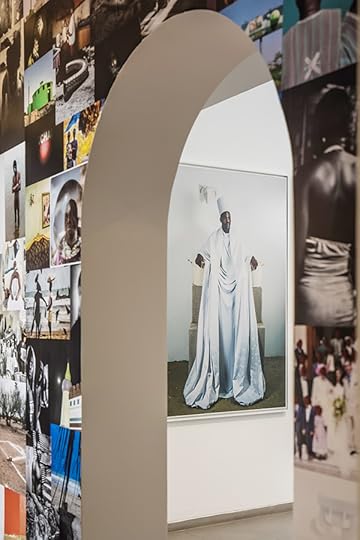
Africa Is No Island. Installation at Museum of African Contemporary Art Al Maaden. Photograph by Saad Alami
© MACAAL
“I was very young, only twenty, when I started buying photography with Leila,” said Lazraq, twenty-nine, who, like his father—Alami Lazraq, a Moroccan property tycoon and one of Africa’s wealthiest businessmen—is an architect by training. Speaking with characteristic brio, MACAAL’s youthful leader told an audience at the museum’s opening how Alaoui introduced him to her motivating ideas as a portraitist, of “facing” the real and “fixing a moment of history.” Alaoui’s sway, however, extends even further: she introduced Lazraq to Jeanne Mercier and Baptiste de Ville d’Avray, of the photography platform Afrique in Visu, who MACAAL later invited to curate Africa Is No Island.
The exhibition features a total of twenty-two individual photographers and one collective, many from the African continent, others—like Paris-based Italian photographer Nicola Lo Calzo and New Jersey-born Ayana V. Jackson—deeply occupied by its social life and connectedness to the wider world. Fittingly, the exhibition includes an image by Alaoui: a life-size portrait of a young Gnawa woman in violet-colored Mauritanian dress, photographed in 2014 in southern Morocco. Installed in an alcove with two speakers playing ambient sounds recorded in Marrakech by Italian artist Anna Raimondo, the work is excerpted from Alaoui’s The Moroccans (2010–14), a roaming project descriptive of the country’s disappearing cultural traditions and diverse racial makeup.
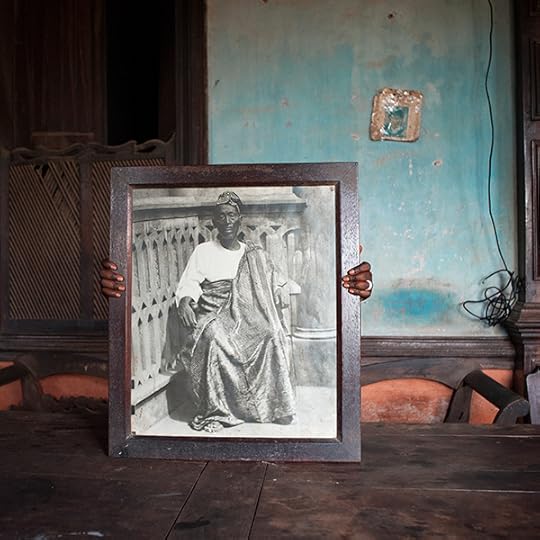
Nicola Lo Calzo, Portrait de David Godonou-Dossou, riche marchand et fondateur de la dinastie Godonou-Dossou, 2011
© the artist
“We chose someone who doesn’t look like a Moroccan,” said Mercier during a walkthrough of the exhibition in reference to Alaoui’s striking portrait. Although Moroccan, the swaddled Gnawa woman’s ancestry is linked to enslaved West Africans brought to the region by Arab and Berber traffickers. Africa Is No Island is mindful of the historical forces that have wracked the African continent. The exhibition includes five portraits from Lo Calzo’s ambitious multicountry project Cham (2007–16), about the embodied legacy of the African slave trade. In 2015, New Yorker critic Hilton Als praised Lo Calzo for bringing “disappeared bodies” back to life “by their living and breathing descendants.” Aalaoui’s portrait achieves much the same.
The team of Afrique in Visu invited French curator Madeleine de Colnet to assist them in their selections, with Lazraq offering additional input—notably a prohibition on wall captions and texts for the individual works on show. “I am really driven by emotions,” said Lazraq about his philosophy as a collector and curator. The lack of explanatory texts at MACAAL is nonetheless a hindrance, especially given the preponderance of documentary and conceptually applied photography on offer. For instance, French Moroccan photographer Mustapha Azeroual’s interest in uniqueness and preindustrial modes of photography—explored in Arbre #2 (2011), a ceiling-hung installation of two hundred porcelain plates featuring one-off images of trees made with a gum bichromate printing process—is hardly self-evident.
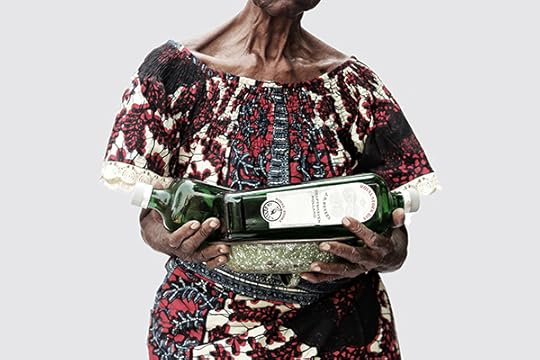
Ishola Akpo, L’essentiel est invisible pour les yeux, 2014
© the artist
Roughly half the work gathered in Africa Is No Island is drawn from MACAAL’s private collection, the balance sourced through Afrique in Visu’s vast network, which is visually signaled at the ground-floor entrance to the exhibition in a wall-scale collage of photographs featured on the platform’s website and exhibitions. Africa Is No Island properly begins with three color images by Beninese photographer Ishola Akpo, from his series L’essentiel est invisible pour les yeux (Essence is invisible to the eye, 2014), matter-of-fact descriptions of dowry objects—like an enamel plate and bottle of gin—that belonged to his recently deceased grandmother. The gently melancholic note registered by this work recurs throughout Africa Is No Island, even in the photographs of Walid Layadi-Marfouk and Lebohang Kganye, the show’s youngest exhibitors.
Along with Alaoui and Hicham Gardaf—a Tangier-born photographer whose series The Red Square (2014–17) offers an economical insight into Morocco’s rapid urban development in a style redolent of Lewis Baltz and Angolan photographer Edson Chagas—Layadi-Marfouk represents the vanguard of young Moroccan photography. His Riad series (2017–ongoing) is largely set in his family home in Marrakech and portrays his kin, notably an aunt, involved in choreographed actions. An outlier in the series, Haya Jat (Starfixion), presents this aunt in a blue evening gown, arms outstretched, facing an audience of two from the stage of Marrakech’s Le Colisée, an Art Deco cinema acquired by the Layadi family in 1971.
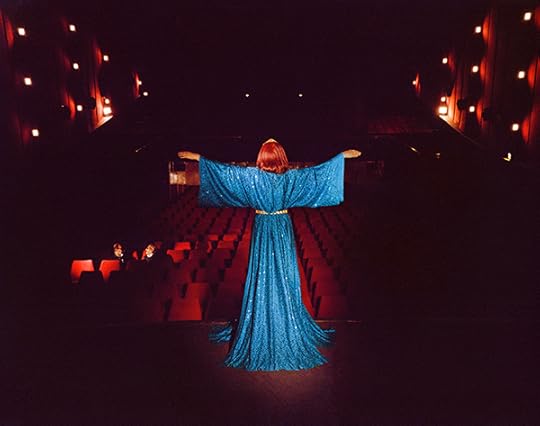
Walid Layadi-Marfouk, Haya Jat (Starifixion), 2017
© the artist
“The idea of the series came when I moved to the US,” said Layadi-Marfouk, who studied math at Princeton before changing to photography. “The visual representation [in the US] of my culture was completely separate and other from the way I had internalized, sublimed, and fantasized it growing up in Morocco. They were just black-and-white images of violent submission, pain, and extremism.”
Similar to Layadi-Marfouk, South African–born Kganye also uses portraiture to affirm her identity and explore intergenerational relations in her breakout 2013 series, Ke Lefa Laka (My heritage). Kganye’s photographic tableaux, which effortlessly blur the line between playful fantasy and sober document, present her in comical poses wearing her grandmother’s clothes and interacting with figures and settings photocopied from various family albums gathered during a research trip in 2012. “Photographs are more than just a memory of moments passed, or people no more, or a reassurance of an existence,” noted Kganye when she first exhibited her work at the Market Photo Workshop, Johannesburg, in 2013, adding that they were also evidence of “a constructed life.”
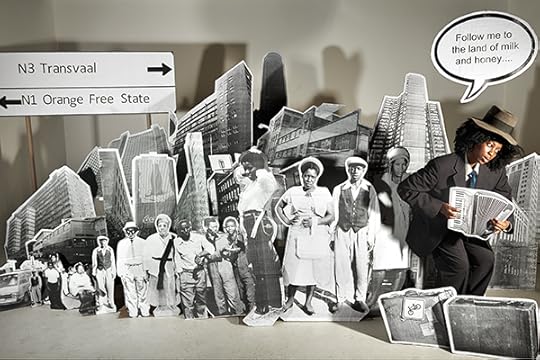
Lebohang Kganye, Pied Piper, 2013, from the series, Ke Lefa Laka
© the artist and courtesy Afronova Gallery, Johannesburg
Kganye is adroitly paired in the exhibition with Sammy Baloji. The Congolese photographer is represented by three photographs, one depicting a Chinese pagoda built by dictator Mobutu Sese Seko at his ruined palace complex in Gbadolite overlaid with a black-and-white image of a bare-breasted Congolese woman photographed in 1935 by Belgian tropical medicine expert Dr. J. A. Fourche. Both photographers use collage techniques to overlay visual memories of the past, some personal, others collectively experienced, on the present day—the burden of history is palpable.

Namsa Leuba, Statuette Kafigeledio Prince, Guinea, 2011, from the series, Ya Kala Ben
© the artist and courtesy Art Twenty One Gallery, Lagos
The exhibition is noteworthy for its strong showing of performance-inflected portraiture, with exemplary works by Joana Choumali, Maïmouna Guerresi, Ayana V. Jackson, and Namsa Leuba, whose cryptic frontal portrait of an anonymous figure wrapped in synthetic material posed in an industrial site, Statuette Kafigeledio Prince, Guinea (2011), forms the cover image of the exhibition catalogue. Choumali’s portraits from her series Hââbré: The Last Generation (2013–14) were a clear favorite with visitors. The images explore the waning practice of facial scarification in West Africa, and feature sitters photographed in Abidjan, Ivory Coast, from both frontal and posterior views.
Like Jackson, whose self-portraits explore the photographic representation of blackness, Choumali’s stylized work is informed by anthropological codes of picturing otherness. The Photography Museum of Marrakech, which opened in 2009, offers ample evidence of this earlier photography; its holdings include pictorial, ethnographic, and colonial photography dating from the colonial occupation of Morocco that ended in 1956. The museum’s displays include a selection of prints by Hungarian photographer Nicolás Muller, who died in 2000 and was the subject of a survey at Jeu de Paume, Paris, in 2014. His confidently modernist portrait of a Tangier youth, photographed in 1941 in three-quarter pose, chimes with the work of Choumali, and even Alaoui—at least stylistically.
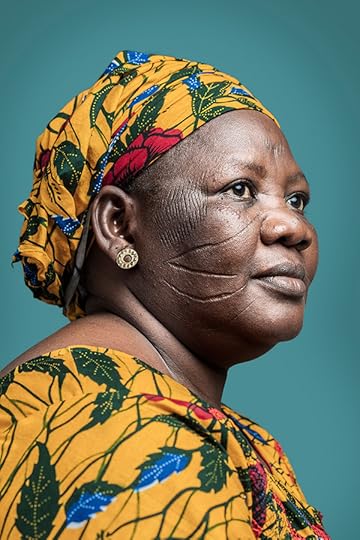
Joana Choumali, Mme Djeneba, 2013–14, from the series Haabré: The Last Generation
© the artist and courtesy 50 Golborne Gallery, London
But style is an unreliable point of entry into contemporary African portraiture; rather it is an interest in photography’s hazy ethics and a common cause between subject and maker that compels many contemporary portraitists. That portraiture is now the genre du jour across the continent was clear from the selection at MACAAL, and also the offerings at the inaugural Marrakech version of 1-54, held in the sumptuous La Mamounia Hotel. Of the artists on show at MACAAL, Leuba, Choumali, François-Xavier Gbré, and Hicham Benohoud all had work on sale at 1-54. One of the highlights of the fair was New York dealer Yossi Milo’s presentation of five gelatin-silver prints by Sanlé Sory from his Volta Photo portrait studio, opened in 1965 in Bobo-Dioulasso, Burkina Faso’s second-largest city. The selection included a striking side-view portrait of a youth in a white vest and cap, thumb propping his chin, eyes appraising the camera—he oozes swagger. Last year, Sanlé told The Guardian, “Fun was central to my work.”
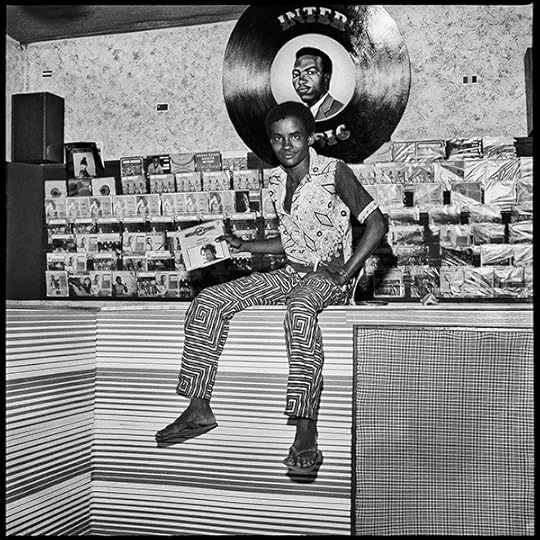
Sanlé Sory, Chez Inter Music, 1976
© the artist and courtesy Yossi Milo Gallery, New York
Fun also remains essential to the work of Hassan Hajjaj, a Moroccan pop artist who took up photography in 1989. Best known for his vivid and playfully garish street portraits of Moroccan youth, Hajjaj’s photography is a flip, urban counterpoint to Alaoui’s respectful portraits, and is on permanent view at Riad Yima, a boutique and tearoom in the medina that also includes a gallery. As part of the festivities around MACAAL’s opening, Hajjaj invited Yoriyas Yassine Alaoui to exhibit his street photographs of ball players, sunbathers, and worshippers from the series Casablanca Not the Movie (2015–ongoing).
Hajjaj’s initiative lent a biennial-like feel to the weekend of MACAAL’s opening, as did writer and translator Omar Berrada’s thoughtfully curated program of talks on the subject of decolonization at the fair, including a fascinating performance-lecture by the Black Athena Collective (photographers Dawit L. Petros and Heba Y. Amin) on pharaonic-era trade along the Red Sea.

Hassan Hajjaj, Marmouche, 2012
Courtesy the artist
In recent years, Marrakech has emerged as an important art destination in North Africa. This legacy is partly founded on the successes of the Marrakech Biennale, an unapologetically progressive showcase of Mediterranean—rather than exclusively African—art, founded in 2005. The 2009 edition, for instance, included a picnic hosted by Tangier-based photographer and artist Yto Barrada, and British artist Shezad Dawood’s Make It Big (Blow Up), hoax stills from a Pakistani remake of Michelangelo Antonioni’s film Blow–Up (1966). However, the withdrawal of sponsorship last year led to the cancellation of the 2018 biennial, which would have coincided with MACAAL’s opening.
Private collectors like the Lazraq family and Nabil El Mallouki, whose Museum of Art and Culture of Marrakech opened in early 2016, offer an alternative approach to sponsor-led events like the biennial. These new private museums also slot into a growing network of cultural venues in Marrakech: some are modest, like the photography museum and Hajjaj’s Riad Yima; others—like the Yves Saint Laurent Museum, opened last year opposite a garden that was created by artist Jacques Majorelle and later acquired by the late French fashion designer—cater to Marrakech’s new class of culture tourists.
“The role of a museum is to engage and educate people, to somehow bring a small touch of light and hope,” said Lazraq before proudly ushering journalists into Africa Is No Island. “I think Morocco needs it, Africa needs it, we all need it.” Part of that education, he added, involves reframing perceptions of photography. Lazraq jovially recalled his father’s befuddlement at his preference for photography, video, and installation art, saying he enjoyed the pushback. It helped reinforce a central article of faith: “Photography is a medium I love and care for.” The eccentricities characterizing MACAAL’s debut photography exhibition design and approach to information notwithstanding, Africa Is No Island is a confident expression of Lazraq’s passion for the medium and ebullient vision to make his North African museum a destination for photography enthusiasts.
Sean O’Toole is a writer and editor based in Cape Town.
Africa Is No Island is on view at MACAAL, Marrakech, through August 24, 2018.
The post In Marrakech, African Photography on Its Own Terms appeared first on Aperture Foundation NY.
April 10, 2018
2018 Aperture Portfolio Prize Shortlist
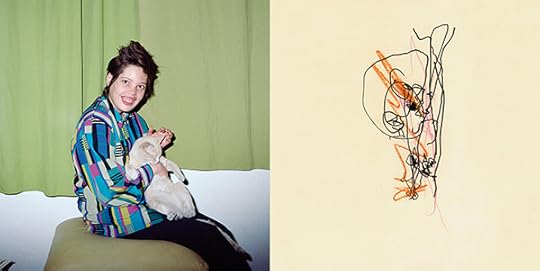

Fabiola Cedillo, Untitled, 2016; from the series Los mundos de TITA

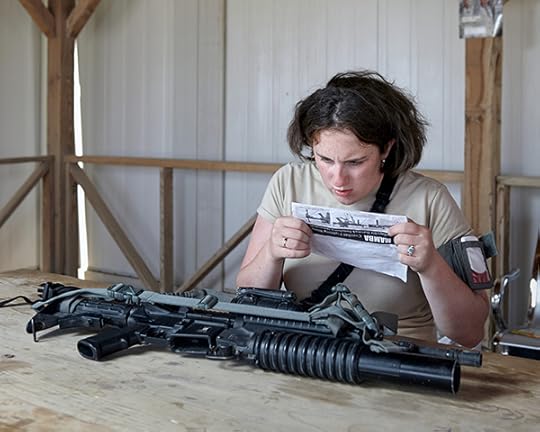
Philip Cheung, Weapon maintenance, Kandahar Airfield, 2010; from the series The Thing About Remembering


Dylan Hausthor & P. Guilmoth, Untitled, 2018; from the series Sleep Creek

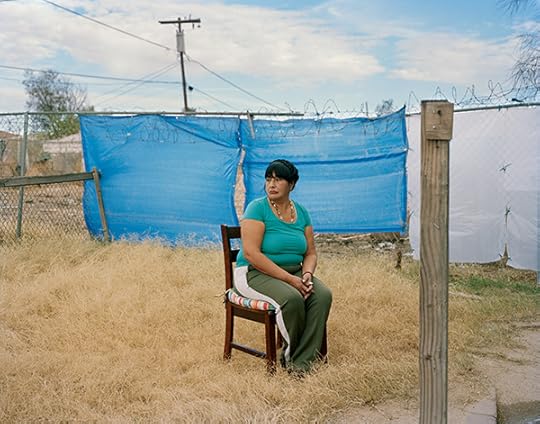
Eduardo L Rivera, A Seat at the Table, 2016; from the series Over Dry Lands

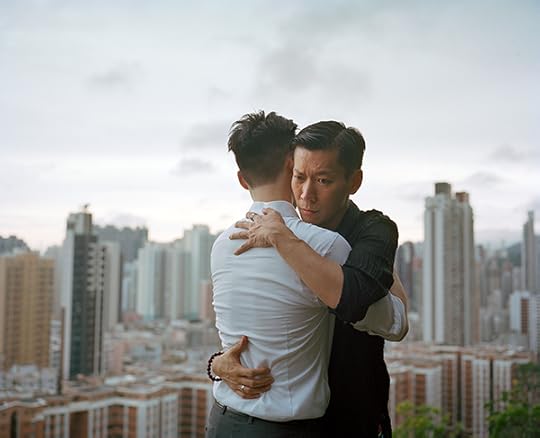
Ka-Man Tse, Untitled, 2017; from the series Narrow Distances
We’re pleased to announce the five finalists for the 2018 Aperture Portfolio Prize, an international photography competition whose goal is to identify trends in contemporary photography and highlight artists whose work deserves greater recognition:
Fabiola Cedillo
Philip Cheung
Dylan Hausthor & P. Guilmoth
Eduardo L Rivera
Ka-Man Tse
This year, Aperture’s staff reviewed more than 900 portfolios. Our challenge is to select one winner and four honorable mentions from this overwhelming response. One finalist will be selected as the winner and will be published in Aperture magazine, receive a $3,000 cash prize, and present an exhibition in New York.
We are delighted to welcome these five finalists to our ranks of illustrious past winners and finalists, joining such artists as Natalie Krick, Eli Durst, Drew Nikonowicz, Amy Elkins, LaToya Ruby Frazier, Alexander Gronsky, Sarah Palmer, Louie Palu, Bryan Schutmaat, and many others. The winner of the 2018 Aperture Portfolio Prize will be announced later this month, and the finalists’ portfolios and statements will be featured on aperture.org.
The post 2018 Aperture Portfolio Prize Shortlist appeared first on Aperture Foundation NY.
April 4, 2018
A Startling Discovery at San Quentin
Ear Hustle podcast creator Nigel Poor uncovers a trove of photographs at California’s most infamous prison.
By Rebecca Bengal
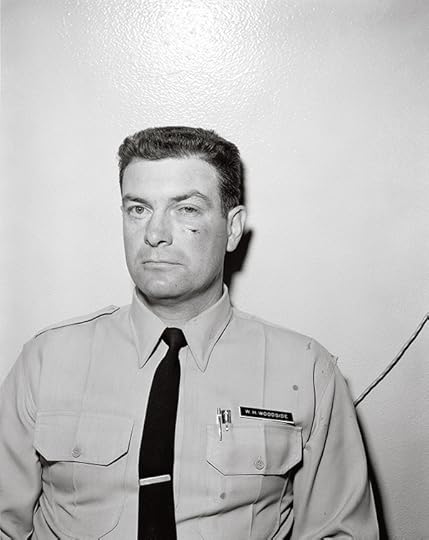
Photographer unknown, WH Woodside, CO Fight, April 8, 1961
Courtesy Nigel Poor, San Quentin Archive, and Haines Gallery, San Francisco
In 1999, at the tail end of a trip to Saint Petersburg, Russia, the artist Nigel Poor found herself standing outside Kresty Prison, the infamous eighteenth-century compound where Leon Trotsky was once held and Anna Akhmatova visited her incarcerated son. Scattered on the ground were dozens of paper cones, weighed down with pieces of bread, small missives tossed out by those behind Kresty’s brick walls. Poor bent down, picked up one of the cones, and took it back home to San Francisco. She has never opened it up. “I wanted to live with the mystery,” she told me one morning as she sat in her car, preparing to make a now frequent commute to California’s San Quentin State Prison.

Photographer unknown, Gym Crew, November 5, 1975
Courtesy Nigel Poor, San Quentin Archive, and Haines Gallery, San Francisco
Since the 1990s, Poor’s photographic series of found items, or banned books laundered like clothes, or portraits of the hands of people who visited her studio have navigated the borders between the known and unknown, using objects or visible features as a means of traversing the divide between the two. These days Poor is best known as a cocreator of Ear Hustle, a widely acclaimed podcast released in 2017 that was produced entirely inside San Quentin State Prison and takes its name from prison slang for “eavesdropping.” In each episode, Poor and her cohost, Earlonne Woods, and sound designer, Antwan Williams—both of whom are serving sentences at San Quentin—engage prisoners in funny, frank, and devastating explorations of topics such as solitary confinement and finding cellmates, but also what it means to confront love, intimacy, hope, aging, sickness, and death while incarcerated.

Photographer unknown, Smith Assaulted, February 3, 1965
Courtesy Nigel Poor, San Quentin Archive, and Haines Gallery, San Francisco
“We’re not journalists,” Woods and Poor frequently tell listeners, an unsubtle reminder that their stories should not be taken as literal documents of what it means to be an inmate at San Quentin. “Our project is about inside and outside people working together, and how we understand each other and misunderstand each other,” Poor told me. It’s exchanges that interest Poor—the paper cones dropped outside Kresty, her elaborate childhood collections of Popsicle sticks and other things people discarded on the ground, the accidental ways we leave behind impressions of ourselves. In one of the luckiest of those accidents, Poor stumbled on an astonishing visual archive from San Quentin, some ten thousand images depicting prison life at its most murderous and its most mundane. It led to San Quentin Project #3: Archive Typologies (2012–ongoing), a project predating Ear Hustle that continues to occupy Poor today.
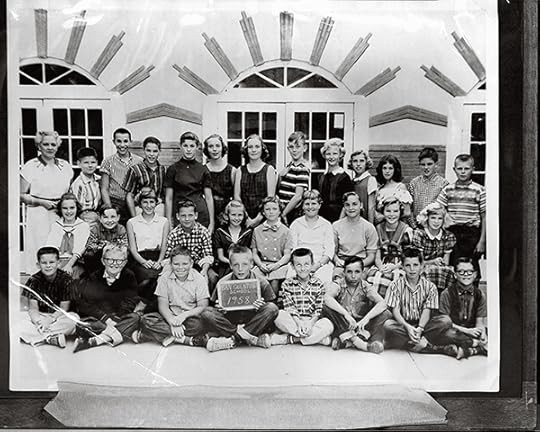
Photographer unknown, San Quentin School Special, 1958
Courtesy Nigel Poor, San Quentin Archive, and Haines Gallery, San Francisco
The roots of the San Quentin project stem from 2011, when Poor and her colleague Doug Dertinger began coteaching a history of photography class through San Quentin’s Prison University Project. They had to drastically adapt the course they taught at California State University, Sacramento: neither books nor cameras were allowed into the facility. In one exercise, Poor asked her class to create “verbal photographs” instead—describing a memory for which they had no photograph, detailing how they would re-create it, frame it, light it, print it. Her students, she discovered, were keen observers. “If you survive in prison,” she told me, “you have to notice everything around you.” In another exercise of “mapping,” Poor gave each student a 17-by-11-inch photograph, each by a different artist and each printed with a wide margin, where she asked her students to dissect the image and then write a response, formal or creative.

Photographer unknown, Wedding, n.d.
Courtesy Nigel Poor, San Quentin Archive, and Haines Gallery, San Francisco
Every image shown in class had to be cleared by administrative officials, who initially deemed anything depicting children, drugs, violence, or emotionally complex issues to be off-limits. “I thought, What’s left?” Poor said. She was ultimately allowed to bring in almost all of the photographs she wanted, with the notable exception of a few by Sally Mann and Nicholas Nixon. Her students cataloged minute details of light and angle: A William Eggleston photograph of a Ford Mercury’s open hood triggered, for one student, the most evocative and meaningful memories of his life. Joel Sternfeld’s McLean, Virginia (December 1978) prompted another story of loss and abandonment, as well as a recipe for pumpkin pie. After the first semester, “one student told me he could now see fascination everywhere in San Quentin,” Poor said. “That was just so beautiful.”

Photographer unknown, Untitled, n.d.
Courtesy Nigel Poor, San Quentin Archive, and Haines Gallery, San Francisco
One day, in 2013, Poor noticed a few boxes of photographic paper in the office of Lieutenant Sam Robinson, the public information officer whose voice Ear Hustle listeners hear at the end of each episode (he personally approves each broadcast). “That’s nothing,” Robinson told her. He opened a file storage box; inside were hundreds of 4-by-5-inch negatives, each in a little manila envelope with a date and a cryptic description: “Assaulted in Print Shop,” “Football Game,” “New Exercise Fence.” Poor learned from him that more storage boxes were filling a room. “I’m not exaggerating when I tell you my heart just stopped,” Poor told me. She was granted permission to take home a box to scan. This first batch turned up violent images, including one of an assault victim, but also some of men in a classroom and a man carving a giant ice sculpture.
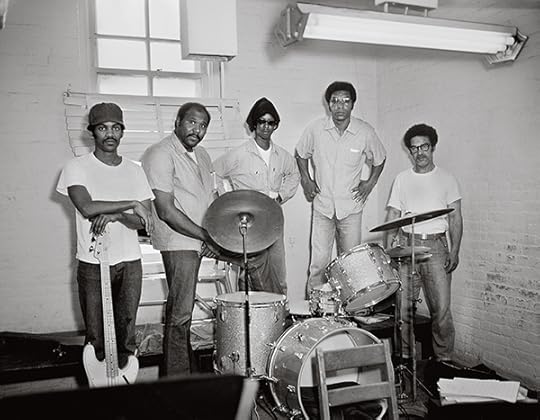
Photographer unknown, Prison Rock Band, June 26, 1975
Courtesy Nigel Poor, San Quentin Archive, and Haines Gallery, San Francisco
The thousands of images represent the work of corrections officers, who ostensibly made them in a purely documentary sense: to keep a record of incidents and events, weddings and stabbings, Christmas trees, lunchtime, the prison band, the eerie masked dummies some prisoners concocted when they attempted to escape. “It’s everything about life in prison that you see when you go in there,” Poor said, “the most depressing and funny and bizarre.” Poor is assembling an archive of the photographs, for teaching and as part of San Quentin Project #3 organized under twelve categories that reflect the aching divide between inside and outside. Among her typologies: “Holidays & Ceremonies,” “Animals & People,” “Escape & Confinement,” “Murders & Suicides,” “Blood & Evidence,” and, her favorite, “The Ineffable.”

Photographer unknown, Football, October 19, 1974
Courtesy Nigel Poor, San Quentin Archive, and Haines Gallery, San Francisco
Poor has discovered no negatives made after 1987. Presumably someone is digitally recording similar scenes in San Quentin now, but it’s curious why a true archive was never attempted, or why, in still predigital times, the photographs stopped. “I’m not interested in them as documents. That’s someone else’s job,” Poor said. “But there are so many details in the photographs I sometimes felt I needed an escort to guide me through them.” With Lieutenant Robinson’s approval, she began asking her students to map onto the San Quentin images too, prompting the kinds of discussions that unfold on Ear Hustle, excavating issues of race and violence and humiliation. “Ultimately, I think showing them these pictures is validating their experiences and giving them a way to talk about their trauma, how unfair life can be. It gives them some tangible truth.”

Photographer unknown, X-mas Tree, December 28, 1975
Courtesy Nigel Poor, San Quentin Archive, and Haines Gallery, San Francisco
But these anonymous photographers, she tells her students, were framing the world too, making implicit choices about what the camera revealed and, most importantly, what it did not. “It may be in this state of not knowing that we are ultimately given the opportunity to engage in the most difficult of life’s questions,” Poor writes. She calls the San Quentin Project #3 photographs “unreliable witnesses.”
Rebecca Bengal is a writer based in New York.
Read more from Aperture , Issue 230, “Prison Nation,” or subscribe to Aperture and never miss an issue.
The post A Startling Discovery at San Quentin appeared first on Aperture Foundation NY.
At California’s Most Infamous Prison, An Archive Unveiled
Ear Hustle podcast creator Nigel Poor uncovers a trove of photographs at California’s most infamous prison.
By Rebecca Bengal

Photographer unknown, WH Woodside, CO Fight, April 8, 1961
Courtesy Nigel Poor, San Quentin Archive, and Haines Gallery, San Francisco
In 1999, at the tail end of a trip to Saint Petersburg, Russia, the artist Nigel Poor found herself standing outside Kresty Prison, the infamous eighteenth-century compound where Leon Trotsky was once held and Anna Akhmatova visited her incarcerated son. Scattered on the ground were dozens of paper cones, weighed down with pieces of bread, small missives tossed out by those behind Kresty’s brick walls. Poor bent down, picked up one of the cones, and took it back home to San Francisco. She has never opened it up. “I wanted to live with the mystery,” she told me one morning as she sat in her car, preparing to make a now frequent commute to California’s San Quentin State Prison.

Photographer unknown, Gym Crew, November 5, 1975
Courtesy Nigel Poor, San Quentin Archive, and Haines Gallery, San Francisco
Since the 1990s, Poor’s photographic series of found items, or banned books laundered like clothes, or portraits of the hands of people who visited her studio have navigated the borders between the known and unknown, using objects or visible features as a means of traversing the divide between the two. These days Poor is best known as a cocreator of Ear Hustle, a widely acclaimed podcast released in 2017 that was produced entirely inside San Quentin State Prison and takes its name from prison slang for “eavesdropping.” In each episode, Poor and her cohost, Earlonne Woods, and sound designer, Antwan Williams—both of whom are serving sentences at San Quentin—engage prisoners in funny, frank, and devastating explorations of topics such as solitary confinement and finding cellmates, but also what it means to confront love, intimacy, hope, aging, sickness, and death while incarcerated.

Photographer unknown, Smith Assaulted, February 3, 1965
Courtesy Nigel Poor, San Quentin Archive, and Haines Gallery, San Francisco
“We’re not journalists,” Woods and Poor frequently tell listeners, an unsubtle reminder that their stories should not be taken as literal documents of what it means to be an inmate at San Quentin. “Our project is about inside and outside people working together, and how we understand each other and misunderstand each other,” Poor told me. It’s exchanges that interest Poor—the paper cones dropped outside Kresty, her elaborate childhood collections of Popsicle sticks and other things people discarded on the ground, the accidental ways we leave behind impressions of ourselves. In one of the luckiest of those accidents, Poor stumbled on an astonishing visual archive from San Quentin, some ten thousand images depicting prison life at its most murderous and its most mundane. It led to San Quentin Project #3: Archive Typologies (2012–ongoing), a project predating Ear Hustle that continues to occupy Poor today.

Photographer unknown, San Quentin School Special, 1958
Courtesy Nigel Poor, San Quentin Archive, and Haines Gallery, San Francisco
The roots of the San Quentin project stem from 2011, when Poor and her colleague Doug Dertinger began coteaching a history of photography class through San Quentin’s Prison University Project. They had to drastically adapt the course they taught at California State University, Sacramento: neither books nor cameras were allowed into the facility. In one exercise, Poor asked her class to create “verbal photographs” instead—describing a memory for which they had no photograph, detailing how they would re-create it, frame it, light it, print it. Her students, she discovered, were keen observers. “If you survive in prison,” she told me, “you have to notice everything around you.” In another exercise of “mapping,” Poor gave each student a 17-by-11-inch photograph, each by a different artist and each printed with a wide margin, where she asked her students to dissect the image and then write a response, formal or creative.

Photographer unknown, Wedding, n.d.
Courtesy Nigel Poor, San Quentin Archive, and Haines Gallery, San Francisco
Every image shown in class had to be cleared by administrative officials, who initially deemed anything depicting children, drugs, violence, or emotionally complex issues to be off-limits. “I thought, What’s left?” Poor said. She was ultimately allowed to bring in almost all of the photographs she wanted, with the notable exception of a few by Sally Mann and Nicholas Nixon. Her students cataloged minute details of light and angle: A William Eggleston photograph of a Ford Mercury’s open hood triggered, for one student, the most evocative and meaningful memories of his life. Joel Sternfeld’s McLean, Virginia (December 1978) prompted another story of loss and abandonment, as well as a recipe for pumpkin pie. After the first semester, “one student told me he could now see fascination everywhere in San Quentin,” Poor said. “That was just so beautiful.”

Photographer unknown, Untitled, n.d.
Courtesy Nigel Poor, San Quentin Archive, and Haines Gallery, San Francisco
One day, in 2013, Poor noticed a few boxes of photographic paper in the office of Lieutenant Sam Robinson, the public information officer whose voice Ear Hustle listeners hear at the end of each episode (he personally approves each broadcast). “That’s nothing,” Robinson told her. He opened a file storage box; inside were hundreds of 4-by-5-inch negatives, each in a little manila envelope with a date and a cryptic description: “Assaulted in Print Shop,” “Football Game,” “New Exercise Fence.” Poor learned from him that more storage boxes were filling a room. “I’m not exaggerating when I tell you my heart just stopped,” Poor told me. She was granted permission to take home a box to scan. This first batch turned up violent images, including one of an assault victim, but also some of men in a classroom and a man carving a giant ice sculpture.

Photographer unknown, Prison Rock Band, June 26, 1975
Courtesy Nigel Poor, San Quentin Archive, and Haines Gallery, San Francisco
The thousands of images represent the work of corrections officers, who ostensibly made them in a purely documentary sense: to keep a record of incidents and events, weddings and stabbings, Christmas trees, lunchtime, the prison band, the eerie masked dummies some prisoners concocted when they attempted to escape. “It’s everything about life in prison that you see when you go in there,” Poor said, “the most depressing and funny and bizarre.” Poor is assembling an archive of the photographs, for teaching and as part of San Quentin Project #3 organized under twelve categories that reflect the aching divide between inside and outside. Among her typologies: “Holidays & Ceremonies,” “Animals & People,” “Escape & Confinement,” “Murders & Suicides,” “Blood & Evidence,” and, her favorite, “The Ineffable.”

Photographer unknown, Football, October 19, 1974
Courtesy Nigel Poor, San Quentin Archive, and Haines Gallery, San Francisco
Poor has discovered no negatives made after 1987. Presumably someone is digitally recording similar scenes in San Quentin now, but it’s curious why a true archive was never attempted, or why, in still predigital times, the photographs stopped. “I’m not interested in them as documents. That’s someone else’s job,” Poor said. “But there are so many details in the photographs I sometimes felt I needed an escort to guide me through them.” With Lieutenant Robinson’s approval, she began asking her students to map onto the San Quentin images too, prompting the kinds of discussions that unfold on Ear Hustle, excavating issues of race and violence and humiliation. “Ultimately, I think showing them these pictures is validating their experiences and giving them a way to talk about their trauma, how unfair life can be. It gives them some tangible truth.”

Photographer unknown, X-mas Tree, December 28, 1975
Courtesy Nigel Poor, San Quentin Archive, and Haines Gallery, San Francisco
But these anonymous photographers, she tells her students, were framing the world too, making implicit choices about what the camera revealed and, most importantly, what it did not. “It may be in this state of not knowing that we are ultimately given the opportunity to engage in the most difficult of life’s questions,” Poor writes. She calls the San Quentin Project #3 photographs “unreliable witnesses.”
Rebecca Bengal is a writer based in New York.
Read more from Aperture , Issue 230, “Prison Nation,” or subscribe to Aperture and never miss an issue.
The post At California’s Most Infamous Prison, An Archive Unveiled appeared first on Aperture Foundation NY.
The Woman Behind the First Photography Gallery
Helen Gee risked everything to open Limelight in 1954, selling prints by Ansel Adams, Berenice Abbott, and Robert Frank for less than fifty dollars each. Her tell-all memoir, Helen Gee: Limelight, a Greenwich Village Photography Gallery and Coffeehouse in the Fifties, is now available from Aperture as an e-book. Here, Denise Bethel’s introduction offers a preview of the late Gee’s story.
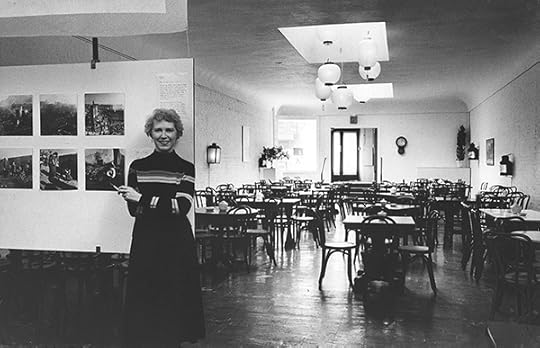
Arthur Lavine, Helen Gee, ca. 1954–1960
Courtesy Gary Schneider
Dear Helen,
I am writing to let you know that, sixty years on, some of the questions are still the same: who succeeds as a photographer? And, whose photographs sell? When you opened your first show at Limelight, in 1954, you linked those questions together for a new generation of collectors, and they’ve been linked that way ever since. Galleries had been selling art for centuries, but you wanted your gallery to be only about photography. This was an act of courage and an act of faith. Stieglitz sold photographs, and Julien Levy too, but they both offered other art as well. Now, look at what’s happened. In 2014, when I auctioned a sale of photographs for over twenty-one million, I wished you’d been there to see it. I was wearing some of your jewelry that night, given to me by two of your closest friends. There were prints in that auction that sold for tens and hundreds of thousands of dollars, many by some of the same photographers you’d struggled to sell for twenty or thirty or forty dollars a pop—Ansel Adams, Minor White, László Moholy-Nagy, Atget, Berenice Abbott, Gene Smith, Imogen Cunningham, Robert Frank, and more. The list is long. It’s ironic that one of your closing shows, the work of Edward Weston, saw some decent sales at seventy-five dollars a print. It’s all very different now. In my life as an auctioneer, I was as ambitious for the medium as you were, and finally, after years in the low-price trenches, I sold not one, but three photographs by Edward Weston for over one million dollars each.
In those long-ago days of the 1950s, you got into selling photographs through the back door: you were a painter who got hooked on photography, and you became a photographer yourself. You made money retouching photographs, enough money even to hire a secretary. And then you wanted to open a gallery. This was a time-honored route to becoming a dealer—through love of a subject—and in retrospect, it may have been the best one. You couldn’t help yourself, it was almost that simple. This was before photographs had much status in the marketplace, and before they could promise any return on the dollar. In 1980, when I got my first job in the photo trade, we called it “photographica.” Now, it’s “fine art photography,” and it’s a medium that’s sexy, a medium that’s hot, and that element of passion is not the determining factor it once was. Maybe that’s a shame. In 1954, you opened Limelight because you loved it, and you hoped that it would somehow, someway translate into money for food and rent.
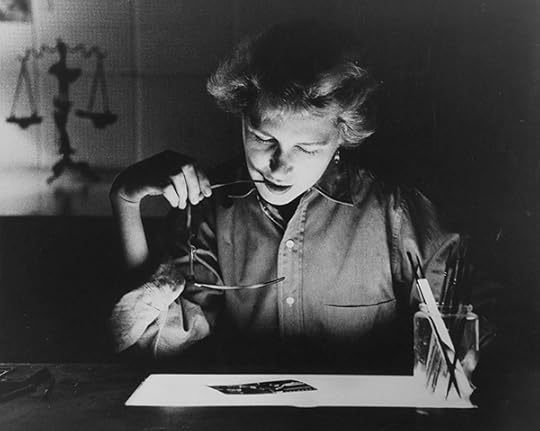
Arthur Lavine, Helen Gee retouching transparencies, 1955
Courtesy Collection Center for Creative Photography, The University of Arizona
For anyone who loves photographs the way I do, your book is a fabulous roller-coaster ride. I love all that gossip and all that juice. People known to me only through their pictures are described by you in wacky detail. Your first photography teachers were Lisette Model and Sid Grossman—Sid kept your classes going on and on past midnight, endlessly pontificating on everything from politics to photo magazines. There were Robert and Mary Frank in their chaotic loft on Twenty-Third Street, boxes everywhere, hard to tell if they were moving in or moving out. The rugged Brett Weston, driving into Manhattan with a gun on his front seat. The tipsy Gene Smith, going from tavern to tavern in the wee hours, threatening to kill himself before he hung his show. The practical Sibyl Moholy-Nagy, glad to clear her husband’s clutter from her closets. Imogen Cunningham holding court at Limelight, giving Peter Hujar one perfect piece of advice. You even babysat the young Robert De Niro, an impossible-to-control toddler with no hint of famous actor in his future. Best of all is your scene with Edward Steichen in a kimono, chasing you around his apartment, putting the moves on. Let’s face it, Helen, you were a looker. But where did you find the guts to turn down Steichen, the most important person in the photography world at the time?
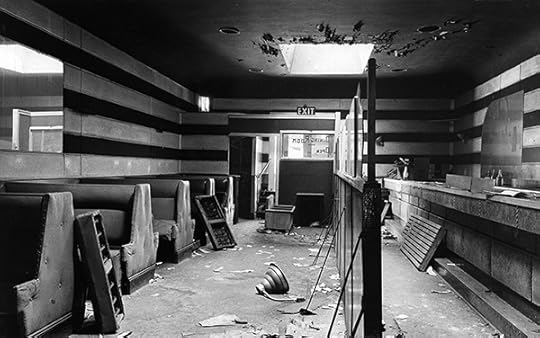
Arthur Lavine, Limelight premises (91 Seventh Avenue South at Sheridan Square) before renovation, February 1954
Courtesy Gary Schneider
These stories make your book a page-turner, and it would be a terrific musical: young woman finds a derelict nightclub in Greenwich Village, goes up to her neck in debt, strong-arms friends to help her plaster and paint, opens a coffeehouse–gallery, and the rest is history. Think of what a director could do with this scenario, Helen, think of the songs, the backdrops, the potential dance numbers—photographers in a cancan! Rain coming in through the broken skylights! We can look back and smile at some of this, but not at the tough parts, no—no, thank you. Let’s save the tough parts for the screenplay: the lawyer who cheated you, leaving you stranded . . . the times you faced bankruptcy . . . the crash course in the restaurant business, the endless staff turnover, the bookies in your apartment building, the union organizers who helped do you in. You wanted to figure out how to sell photographs, not how to work coffee machines. But it was food that kept Limelight going when the photographs didn’t sell, and so you had no choice—you figured it all out. That abandoned nightclub before you transformed it into Limelight—good grief. What exactly were you thinking? You recount it all with equanimity and sometimes, against all odds, with humor: the highs and the lows, the triumphs and the failures. And there’s not an ounce of self-pity in the narrative. It’s a lesson for all of us.

Arthur Lavine, Jerry Tallmer and Helen Gee (during renovations for Limelight), 1954
Courtesy Gary Schneider
When you did sell a photograph, and it didn’t happen often enough at first, you tell us candidly that it was nothing less than “an event.” You hung sixty shows in seven years, gave a lot of photographers their first exhibition, and created a special space, unique in the city then, for photography people to gather. For better or for worse, you brought photography back into the art market debate. Your shows were reviewed, with gravitas, in the New York Times and the Village Voice. One reviewer in the Sunday Times had the nerve to suggest that, for the modern world, photographs might just be more important than paintings. Whaaaaaat?! And so the controversy started up again, years after Stieglitz had thrown in the towel, and I’m writing to tell you that it’s going on still, today. I remember an Old Masters collector who walked into a photo auction preview by mistake. He was stunned when he saw the estimates. “Why, you can buy a good painting for what some of these things are worth!” he said to me, outraged. You just have to keep smiling, right?
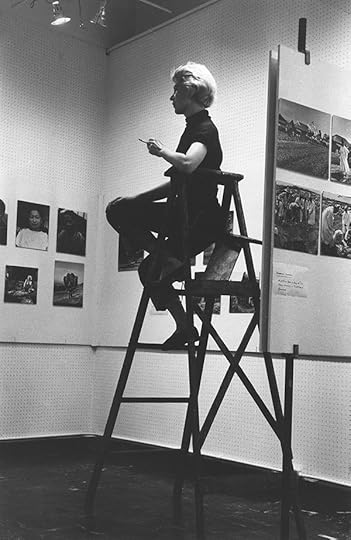
Arthur Lavine, The first exhibition at Limelight featured the work of Joseph Breitenbach (and was installed by Sid Grossman), May 1954
Courtesy Gary Schneider
If you had just been able to hang on for a few more years, Helen, just a few. If you had just been able to figure a way around the union who tried to recruit your ragtag staff of part-time actors and out-of-work dancers. You were living one week to the next as it was, on borrowed time. Who could have predicted what the last straw would be, after all the creditors you’d dodged and all the photographers you’d cajoled? It’s heart-breaking to me that you closed when you did, because photography was about to move into the art world in a big, big way. Lisette Model introduced you to the young Diane Arbus, right at the end of your run. Grace Mayer brought by a Midwesterner named John Szarkowski—he was in town for a job interview at the Museum of Modern Art. Less than a decade after Limelight folded, Lee Witkin started down the trail you’d blazed: he opened his gallery in Manhattan, in 1969, and others followed. New York and London began to auction photographs in the 1970s, and slowly the prices went up. In 1989, I was in the room when a photograph broke that magic one-hundred-thousand-dollar ceiling at auction—an Edward Weston nautilus shell. Applause broke out, and all of us thought we’d hit the big time. Yet prices kept on going. In 2006, I was at the podium for the first photograph, classic or contemporary, to sell at auction for over a million dollars, $2.93 million, in fact. It was The Pond—Moonlight, a Pictorial tour de force by your old friend Edward Steichen. And again, I was wearing some of your jewelry that night, wishing you could be in the room to see it. What would you have thought if you had seen that $2.93 million in the press, who by then was jumping on every meteoric rise in price for photographs?
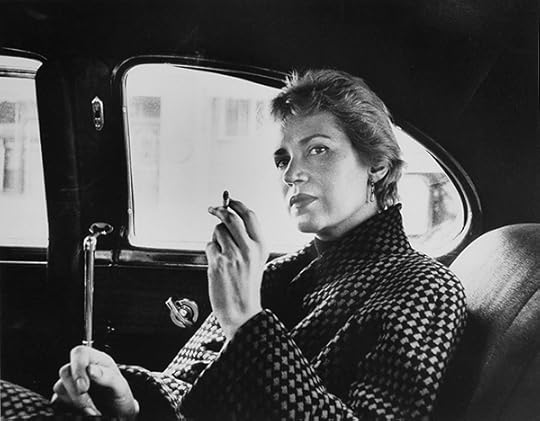
Arthur Lavine, Helen Gee on the way to the opening of Limelight, May 13, 1954
Courtesy Gary Schneider
Does reading your book now, when so much has changed, make me miss those historic old times? It’s romantic to read about, Helen, but maybe not to have lived it. You had the strength of an ox. Now there are more of us in the business, and there is safety in those numbers. You were thrilled when Roy and Anne DeCarava opened a gallery in their apartment on the Upper West Side, because you knew it would be good for Limelight as well. It closed before you did, unfortunately. You tried new kinds of food to keep the doors open and reviewed endless portfolios for free, but it was always a cliff-hanger. In the 1950s, selling photographs was not the way to get rich, that’s for sure. You were far, far out on a limb.
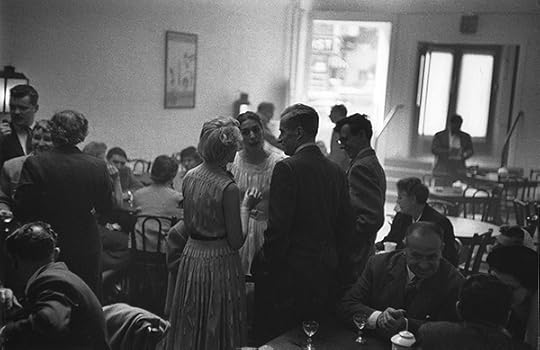
Arthur Lavine, Opening party (Helen Gee and Peggy Tallmer in center), ca. 1954
Courtesy Gary Schneider
And, yes, there’s one more question your book brings up, and it’s a question, like the others, that’s still with us today: not who succeeds at selling photographs, but can it be a woman? Being a woman, Helen, might not have been the easiest way to start. When I climbed into the auctioneer’s box for the first time, I was the first female auction head of photographs to actually take a sale. (“You need to stand up in the podium, don’t sit down up there,” a friend recommended later, when he saw how the box engulfed me. “I am standing up,” I had to tell him. “I’ve been standing up for years.”) Although there are many—many—more women in the photo world today, we’re still outnumbered. And, to top it all off, in your Limelight years, you were not just a woman, you were a divorced single mom. You stayed up nights working, retouching photos, you worked when you were sick, you scrambled to find babysitters, you read all those books on raising children, you wanted your daughter to have the best. Thank you for being frank with us about trying to find the time to date and to make those tricky man-woman relationships work. How did you have any stamina left at all? For single moms out there, career moms with not much money, like you, I expect this may not have really changed.

Arthur Lavine, Exterior of Limelight, ca. 1954
Courtesy Collection Center for Creative Photography, The University of Arizona
Helen, I’m such a fan. We don’t have enough in print about what it was like in the early days of the photo trade, and in your case, a memoir about the business has become a memoir about the medium itself. Although I adore all that gossip, my favorite parts of the book are your zingers about the lasting (or not!) value of the photographs and exhibitions of your day—your pages on The Family of Man, for starters. Your right-on comments about the whole photo scene can’t be paraphrased—and so I’ll leave it to new readers to discover for themselves your razor-sharp eye. You would have been a great critic, Helen, because you knew the medium from the inside, and you made it your business to know the people. I am in awe of what you did, and for taking the time and trouble to put it down on paper.
With all best wishes,
Denise Bethel, New York, January 2018
Denise Bethel, formerly Chairman, Photographs, Americas, Sotheby’s New York, is now an independent advisor, a writer, and a lecturer based in New York City.
Helen Gee: Limelight, a Greenwich Village Photography Gallery and Coffeehouse in the Fifties, published by Aperture as an e-book, is available on Amazon and other e-book retailers.
The post The Woman Behind the First Photography Gallery appeared first on Aperture Foundation NY.
Aperture's Blog
- Aperture's profile
- 21 followers



